|
I met Thomas Katan on a workshop by the infamous Jamie Catto and I was inspired by his proposition. He was choosing to live a nomadic lifestyle so that he could do ‘live-in personal development coaching’ based on gifting and donation. I would give him a bed and food for a few days and we would hang , working together on anything I’d like to work on. We agreed three days, Monday to Wednesday. I was excited! Time for some RADICAL COACHING in the form of 'Shadowing'. (All the photos here are by him, as he shadowed me teaching a group.) Day One In preparation Thomas asked me to set an intention and give him my schedule - something I do with my own clients. His main difference was that we would then just hang out and follow the flow of interaction to see what would arise. I would describe Thomas as a coach that has an embodied faith in the wisdom of emotions. Our first interaction revealed that to me. Grumpiness We met in the park, on a sunny Monday afternoon. We played around and talked with passers by and I realised that Thomas was very open to connections. I noticed the contrast in myself, the desire to get him alone and get ‘working’. So I bought him a smoothie and we found a quiet patch of grass to talk. I noticed my inner grumpiness and acknowledged it, trying to change the dynamic of things. Thomas invited me to feel into my mood and reveal, what he called, ‘the need underneath’. I realised that I had a strong impulse to move, so I stood up and climbed a tree as he watched me, and then I felt something new - aggression. I told him that I’d love a play fight. He was up for it! Fighting So it was that at Two O'Clock on a Monday afternoon in Castle Park two grown men began grappling and throwing each other around, whilst people watched and ate their lunch. It was incredibly cathartic and we sat down, catching our breath, laughing. The emotion had moved through me and left space for us to connect. We made our way back to my place by bicycle. Fasting Our conversations went this way a lot, following emotion and impulse into action - and this was very revealing. We talked about this word 'need' a lot - could we gently exploring soft edges of ‘neediness’ by spending extended amounts of time without food? We decided to do it together - 3 days of fasting, allowing 1 afternoon meal per day! For me this was unnerving, and fascinating. Skill Share Rather than direct coaching this was more of a two way ‘skill share’. We would learn from one another. Thomas came with me to my evening meditation class, which I teach. I taught about expressing emotion, through voice ('oming' meditation), sharing (I feel… I imagine…) and movement (shaking and sighing). This was a reflection of things I had learned in the play fight today! Then I took Thomas to his first blues dancing class, taught by Tristan Brightman and followed by social dancing to live music (The Blues Happening). This was my community and a skill I had cultivated. At the time I thought this was out of his his comfort zone but after checking in with him I was surprised to see how comfortable and happy he was in that space. I was pleased to see him get stuck in, and we both had a lot of fun. Day two - Building Trust here is something about revealing oneself to one and another that enables trust to develop. We had each shared a part of ourselves with the other and now we were relaxing into being with each other, more naturally. Thomas led me through a morning movement meditation, which I loved. Rocking and stretching as we sat cross legged and observing emotions and thoughts. He then joined me as I taught a group in what I call 'Mindful Positivity' at the local NHS clinic. He was kind enough to take photos of the session. Thanks to Simone Davies for allowing him to come along. Lunch Emotions The afternoon came - we ate veggies flavoured with basil in the sunshine and talked at length. What arose was a belief in me - “I need to do something, I can’t expect things to come to me”. Whilst this may seem rational it also came with an emotion which Thomas picked up. He probed me with questions and I noticed the emotion shutting down. That was no good - I wasted to catch it and build it up to discover what this was about - to ride the wave! I remembered that Thomas had done work with touch and breath so I suggested we switch gears and try those methods. I laid down and he pressed on the area I felt was the centre of the emotion - the chest and forehead. Here the work became more intuitive. I asked him to repeat some words and he encouraged me to see myself as ‘land’ and the emotion as ‘crashing waves of sea’. I cannot be harmed by them, and I can even build them up to an intense amount, as I observe from the land. This resonated and I was able to build and explore the emotion with safety. I explored bodily shaking, crying, memories and it revealed that fear was lying underneath the 'need to get things done’. The instinctive desire underneath all the thoughts and emotions was for friendship. Cathartic Calmness Something had moved through me and settled down to leave a beautiful oceanic depth. I asked Thomas “what’s the point of all this?” as I couldn’t cognitively grasp the process. He simply said “to connect you to yourself so you can feel good and realise the real inner need”. He was right - all this work is about feeling good, and connecting to myself - the scared, vulnerable and ultimately beautiful inner me. The me which simply wanted friendship. That emotional work was tiring and after a nap I finished the day by teaching with Mark Dunn at Bristol City Yoga. During these sessions I sometimes get nervous and lose my calm presence, however, today I was able to calmly listen and take in the emotions of others and even had the presence to see my own fears and impulses, without ‘needing’ to react. Mark lead with lots of words and enquiry of the students, and I listened. He had to leave early and I held the last 30 minutes. I was able to shift the energy of the room with movement and then gentleness and I think this had an enormous effect on everyone. I felt great about it. Day three - MORNING routine Another sunny day and another movement meditation, before Thomas went off to teach his own yoga practice. I channelled my inspiration into my morning routine (MORNINGS - Meditation, Outlook, Reach out, Nourish, Inspire, Nature, Gym, Stretch). I spent a good hour of ‘inspiration’ writing my book (work in progress) and when he returned we continued my morning routine - Nature (we went for a run and slack line practice in the park) and then Gym. I showed him my HIIT practice, which I do regularly. He particularly enjoyed the rice bucket challenge. Rounding up We spent the afternoon talking and eating, ending the three day food fasting. I helped him learn the guitar. We shared a lot of information and we explored the work again, in review of the past few days. We came to these conclusions:
At the end of day three
We chatted and Thomas shared his photos, and I felt close to this person who was but a stranger three days ago. I relayed how,the fasting process had been a microcosm of the ‘feel, reveal, heal’ method. Throughout the week I had found hunger arising and I would not react, as I have done in the past, with filling up. Instead I observed it and felt into the deeper drive, realising it was often an impulse to move, or to dispel a story and come back to my senses. I now know that the hunger waves don’t last long and I’ve discovered more energy when I channel my focus into revealing and healing the underlying drive and emotion. This is just another example of the insight revealed by working in a different way with an interesting person, like Thomas. I feel grateful to have experienced Thomas directly. I intend to continue to develop and research the new modes of exploring that he has inspired in me. Overall the biggest takeaway of the week was friendship, which it seems was the underlying desire all along. :) Check out Thomas here: Thomaskatan.com
0 Comments
Do you ever get stuck or end up arguing because of miscommunication in your relationships?This is a tool I created to use when talking between two people becomes incredibly difficult and you’d like to reconnect, constructively. I hope you enjoy it and please let me know if you have feedback. The problem: is that both people get so frustrated that they interrupt and don’t really listen. This leads to resentment and frustration. The method: Inspired from the practices of Circling and authentic relating, after listening to a person you pause, tune in and respond with either:
Let's look into these in more detail... These three simple ways of responding are a way of communicating mindfully.
A useful ending can be to sum up:
VULNERABLE! Having a real conversation with actual listening takes courage and feels vulnerable. Remember to practice healthy self care by finding your own balance of boundaries and empathy. In the end you will know if it is worth it, because experiencing this kind of honesty and intimacy can feel incredible and reconnect people through seemingly impossible arguments. Good luck, keep breathing and listen to yourself too. x Bonus: Celeste Headless tips: Keep your mouth shut frequently. Instead of talking endlessly:
Bronnie Ware is an Australian nurse who has counselled people in their last year of life has revealed the most common regrets we have towards the end of our lives. And among the top, from men in particular, is "I wish I hadn't worked so hard." Bronnie recorded their dying epiphanies in a blog called Inspiration and Chai, which became a book called "The Top Five Regrets of the Dying." In it she says, "common themes surfaced again and again." Here are the top five regrets of the dying, as witnessed by Bronnie: 1. "I wish I'd had the courage to live a life true to myself, not the life others expected of me."
2. "I wish I hadn't worked so long and hard, sacrificing what I loved."
3. "I wish I'd had the courage to express my feelings."
4. "I wish I had stayed in touch with my friends."
5. I wish that I had let myself be happier."
Some questions:
I was recently asked to interview for a company (Adlib) blog based on "work and life balance". Here it is: ADLIB: Let’s start with ‘Why’, how do you think can mindfulness help with workplace stress? Neil Morbey: People work most effectively when they have good focus, which requires a clear mind, so one can move the attention effectively from one task to the next, and with an overview of the whole purpose. This requires a balance of attention. 21st Century education and society has filled our waking moments with busy-ness of pinging smartphones, marketing, unreasonable expectations and endless information. The modern worker is lost in a world of confusion and therefore mentally creates stress - a mind full of ‘stuff’, instead of clarity, focus and balance. Anxiety, burn out and apathy are the inevitable result and businesses foot the bill for recovery. Mindfulness is both preventative medicine and helps people to ‘hit reset’ when they’ve gotten themselves into a hole; to pause and reflect, connecting with what is simply beautiful - the experience of being here and now. This is the beginning of awareness, acknowledgement and appreciation, which allows us to refocus, as a clear and balanced choice. The how is simple - make space for learning, practice and for integration of ‘moments’ within the fabric of the way we work and interact. Mindful communication quickly follows mindful self-awareness. Inspiration keeps it moving ADLIB: Can you share 3 pieces of wisdom or mindful exercises that one could introduce into their daily routine as an employee or as a manager? Neil Morbey: Yes.
ADLIB: In your opinion, how can mindfulness improve the way that people work? Neil Morbey: It allows us to move our attention from one thing to another with more ease, and therefore let go of resentment and speak more assertively and compassionately. At the end of the day it allows us to shift modes and leave work at the office so we can balance our lives and manage our ‘human’ priorities. This will help us feel that work is not a chore, but a nourishing activity that is integrated with our lives. People who feel in control of our lives worry less and are more productive, with less passive aggression. It also opens us up to creative possibility. We become more positive in our outlook, which drives innovation and inspiration. ADLIB: How can mindfulness be reinforced consistently in the workplace and be made a priority?
Neil Morbey: The leaders must first recognise the importance of mental health in their duty of care. However mindfulness cannot be forced on employees, it must be inspired. So I think the best way is to involve people in that question and to bring in people that can inspire. Regular refreshment of inspiration is key to keeping the practices fresh and ‘reminding us of why, and with new styles of ‘how’. No one wants to repeat the same stuff every single day. Ultimately every individual is responsible for themselves, but it usually takes a few to lead the way and create momentum. If that’s you, reading this, I suggest practising what Gandhi preached: Be the change you want to see in the world. Be vocal about it and enjoy it. When others hear and see you you’ll be giving them permission to do it too, because you show it’s possible, fun and the risk is worth it. Encourage them and get the ball rolling. Leaders inspire the people around them. Be the change. About Neil Morbey: Neil specialises in helping people become emotionally resilient and work with schools, businesses and individuals to facilitate people to find their sense of happiness, confidence and connection. More information via the positive-mindful (LINK http://www.positively-mindful.com/) website. Adlib: Creating teams. Shaping futures. https://www.adlib-recruitment.co.uk/blog/ MEDITATION POSTURE There is a lot of bollocks on the internet about posture, featuring attractive young men and women sitting on rocks overlooking water, or on steps (!?) as if they've been sat there for hours contemplating wise enlightened attention. Utter marketing drivel. Please don't buy it or anything you read here that make you think you're not good enough. The aim of this blog is to dispel that claptrap and keep it simple, concise and useful. HOW SHOULD I SIT IN MEDIATION? Firstly let's get it clear - meditation is a practice of mindfulness (paying attention to the present moment without judgement). Therefore there is no 'right' as that is a judgement. The aim is to sit in a way that is comfortable for your body, and which also represents the attitude you want to carry inside as you meditate. What you 'want' not what you 'need' to do. This chosen attitude will dictate your posture. Interestingly there are theories that the external attitude is related to an internal attitude. One is affected by the other. That means your current posture is a reflection of your internal state AND you can affect your internal state by changing your posture. My experience is that by choosing a posture to reflect an attitude that I deeply enjoy I have created that inside and out as an automatic pattern. :) INTENTION + ATTITUDE + VISUALISATION + BODILY FEEDBACK = POSTURE. Intention: Why are you here? What are you hoping to feel, have or do within this meditation? You don't have to think about this every time, but for the first few it's worth considering. Generally my intention is to love myself, to be diligently focused and peaceful & loving towards what I find. Attitude: What attitude would I like to bring to create that intention? Again, I'll get into the swing of this and barely think about it most day, but I'll often remind myself: I'm going to choose an attitude of 'self respect' and 'alertness'. Attitude and intention are nearly the same thing, but attitude is more of a feeling and way of 'being', whereas intention is more a 'doing'. Visualisation: What image could help create the attitude? I like to use either, the image of wearing a cape, like superman, and tying it on creates a shoulder roll. Or the image of a string at the crown of my head getting lightly pulled up so that my spine hangs naturally. Another is to imagine a cushion of air between each vertebrae and then as you breathe in deep it inflates and as you breathe our some air is released, leaving the spine well adjusted and stacked. You can hold the visual image for 10-30 seconds to make it stick. You don't have to physically change anything, the body will do the work for you. Bodily Feedback: What would this look like in posture? Let's give it a go and find out as we tune into the body. I start by choosing to kneel, with a straight back, relaxed face, slightly dipped chin. I then realise my shoulders are hunched and chest is collapsed so I correct this with a rib cage lift (engage the core muscles!) and roll my shoulders behind my back. Posture: Many people like to sit cross-legged. I usually like to use a stool and kneel. I can change my posture in small ways (or completely) as I meditate. Moving doesn't mean I've failed. I've gradually learned when to tune in to discomfort, to watch and wait. Now I rarely move, but that is a natural product of years of experimentation. I've been meditating a long time and I'm used to this posture. Sometimes I try a different posture once in a while to shake things up. These could include: 1.Sukhasana (Easy Pose) Basically legs crossed sitting with feet under the knees. Some all it Burmese. 2. The Lotus positions (seductive name!) Quarter is basically legs crossed with feet on the calves. Half lotus would be one leg on top of the other thigh and one leg extended (awkward!) and full lotus is both feet resting on top of the opposite thighs. Pali term: Padmasana.
So what do I do in a meditation? It's really simple, but it's not easy. The point it to BE WITH YOURSELF in non judgement and non reaction. That means sit relatively still and allow yourself to NOTICE, OBSERVE and WELCOME things (NOW). Be in the now. If your thoughts come, acknowledge them, thank the mind and bring your focus back to here and now. This could be:
Mantra? A mantra is a repeated phrase used to concentrate the mind. Some people love to chant or think in meditation. I love an internal mantra and sometimes use it. Here are a few nice ones:
The key thing to remember: Compassionate Curiosity
With meditation posture and stillness are HELPFUL but the key thing is to practice COMPASSIONATE CURIOSTY. Meet whatever you find with this attitude and you'll begin to train the mind to do this all the time. Your body will relax and cooperate. It take time and repetition, as with any skill, but more than that is takes the quality of compassionate curiosity. If you nee to move, adjust or do something in meditation take a moment and get curious first, then, if you wish, do it, and enjoy it - do it fully and deliberately. Notice how it is. Then, choose to come back to stillness and introspection. It is a wonderful journey and if you are just beginning I am envious! So many riches to open up to and discover. You'll grow in sensitivity and awareness as well as love for yourself and the world. Of course, you'll probably first discover IT GETS HARDER BEFORE IT GET'S EASIER. Because we become more aware of patterns of shame, guilt, anger and fear.... jucy! If you need help let me know. Good luck and enjoy the ride x There is a lot of confusion about coaching. Many successful people see a coach regularly because they recognise that having someone offer an outside perspective and ask them useful questions allows them to take their endeavours to the next level. I am a coach and I use the services of a coach to keep me working well. I coach using mindfulness practices to help people untangle worry and confusion, pain and suffering and rediscover clarity, inspiration and confidence. Coaching is not counselling and I'm not a qualified counsellor. The main purposes of coaching is:
The difference and similarities between Coaching and Counselling
Both approaches can be useful, and when I coach I may at times take more of a counselling approach, but I see coaching as an effective way to encourage clients to improve their self-connection, become happier and more successful in achieving chosen goals. The big question is... DO I NEED A COACH? No. 'Need' is a strong word. You don't need - you are a capable human even if you have lost your way a little. You can work on yourself and you will arrive at the right place. A coach will facilitate that process to make it smoother, faster and easier. It's a choice. But here are 7 clear reasons you might choose a coach to help you, even if you feel fine: 1. COMPLACENCY: When you think you’ve tried everything you get complacent and can fall into the trap of belief that “it’s hopeless” or "I know what I’m doing." This is a stagnation. Coaches challenge knowledge, and will encourage you to learn, by asking “what may I be missing?” If discovered this can shift your entire worldview and help you enjoy and acheive more than ever before. 2. BLIND SPOTS: The longer you live and work the more blind spots you develop. Coaches point them out and help you plan to clear them. 3. UNBIASED HELP: Unlike friends and family coaches are unbiased, honest and skilful communicators. Coaches say it as they see it and try and remove their prejudice. They're not invested in your choices, so they won't be tainted by them. They’ll just aim to help you find the right path for you. 4.EXTRA ENERGY AND COMPUTING POWER: You haven't always got the energy and courage to ask pertinent and difficult questions of yourself. A coach will. With the energy boost comes another human to direct it at solving issues - two heads are better than one! 5. CONFLICT RESOLUTION: A coach supports you to manage conflict effectively - to walk the line between empathy and boundaries, from a detached perspective, and with the skill of their training and practice. 6. OPENING UP: You can be more open with a trusted coach than any other business relationship, and at times, even more than intimate relationships. This is helpful, to get stuff off the chest and stop wasting energy holding it. It can also be helpful to encourage us to open up vulneraby with those you’d like to be more intimate with; to build real connections. 7. EXPAND OPTIONS AND FOCUS DECISIONS: The Coach helps you significantly expand your options, and also your decision-making ability, by facilitating you to remind yourself of what is important and what isn't. WHAT HAPPENS IN A COACHING SESSION? Ok, you like the sound of that, yes? Confused about what will happen in the session?
CONSIDERING IT? Ok, here are 6 questions for you to consider, if you are thinking coaching might be helpful: 1. Do you have the courage to acknowledge that you may need or could be helped by a coach? 2. Are you ready to question your limiting beliefs, biases and assumptions that may be stopping you from achieving your full potential, or your organization’s full potential? 3. Do you and/or your organization/relationships lack a clear vision of where they want also lack inspiration and motivation? 4. Do you need to be shaken up out coasting and slumber, to get excited and refreshed? 5. Are you working hard, and yet not achieving all of your desired results? 6. Are you ready to make a learning commitment, and then build a learning culture? If your answer 3 or more as 'Yes', then time has come for you to get yourself a skilled coach.
This blog is a sharing of some of the information I teach at the start of a mindfulness course - I've knocked it up quite quickly. The theory is informed by the work of Robert Lustig a leading US academic who studies addiction and hedonic behaviour and explains brilliantly the difference between happiness and pleasure. I've supplemented his work with my own ideas. Enjoy! We've confused Happiness with Pleasure If I were to ask you the difference between happiness and pleasure I'm guessing you'd struggle. That's because modern capitalism has conflated the two. I'm here to suggest we can't' do', 'take', 'get' or 'buy happiness (which means we have to ignore the marketing and social lies), because it is a balance of two things - pleasure and contentment and contentment is something trickier to get hold of. Sure there is a little more to it (meaning for one) but by realising the balance we can start to understand why we might be unhappy, when we see we are chasing our tail, so to speak. If we choose to balance serotonin and dopamine in our system then we may be on a happier track. Let me explain... How do we find balance?
Let's start by looking at the two neurotransmitters that Robert points out... Dopamine: is the exciting neurotransmitter that excites neurons (as a signal to pay attention) in anticipation of a stimulant. Endogenous opioid (rush of pleasure), Cortisol (rush of fear/excitement), Adrenaline (rush of energy for attack) or Endorphins (rush of pain relief), after which the neurons must close down to protect themselves, which gives a feeling of withdrawal. This is all a natural part of our motivation system, like the dog - doing, getting, busy, like:
Modern Tricks: We can now trick our reward systems with these things, which we may want to consider reducing:
Serotonin: is the down-regulator of neurons, which is a necessary component in relating, resting and digesting (food and information). If dopamine is ‘doing’, serotonin is ‘Being’ - like the sloth - slow, calm, content. Or a Cat purring nicely. We can generate this via:
Risk / Reward Cycles: IT’S NOT WHAT YOU DO, SO MUCH AS HOW YOU DO IT. Any activity can be done in a content way (with rewards), or a way that chases pleasure (with risks). Doing something dog-like: to chase and control a pleasurable outcome risks falling into our innate bias towards negative thinking, which could negate our efforts to find pleasure. The mind may jump to negative stories as expectations are rarely met, creating confusion & craving. Some activities encourage contentment - meditation, reading, walking, whereas others discourage contentment, like gambling or gossip. The more we ‘choose how to be’ with mindfulness the more activities can be contented. Doing something cat-like, or sloth-like: mindfully, slowing down to to connect. This will lead us to more long-term rewards. Sex, sports, and productivity can all be a contented if we slow down and reduce our ‘need’ for pleasure and ‘avoidance’ of pain. Then we can balance our desires and find happiness in the mix. In order to summarise I made a fun table, enjoy! It's based on the 7 differences Robert discussed, and I've made an acronym!!!
“A thought is harmless unless we believe it. It’s not our thoughts, but our attachment to our thoughts, that causes suffering. Attaching to a thought means believing that it’s true, without inquiring. A belief is a thought that we’ve been attaching to, often for years.” MEDITATION The more she meditated the more she saw that her mind was always trying to tell her stories, to make sense of the world. Many of these were ghost stories and spectres - images and words (which is all imagination provides) creating a nebulous feeling of hopelessness, pain, depression and hate. Upon the new realisation she wondered how to address the ghosts, the painful stories, beliefs and assumptions. At first she tried to just ignore them. Then she tried to cover them with positive speak, but her mind was still believing them, so it never felt safe enough to believe a new story - it just created inner conflict. The old stories had been presented to her so often that she was convinced that they were true. So she decided to meet all the thoughts with kind questioning, with time and space, leading to a simple understanding; when our beliefs argue with reality we suffer. She treated it as meditation; allowing each question to be held, without forcing answers. Almost as if the ghost thoughts were like children - they just wanted to be heard and understood before they could move on and transform. She began to see that reality was just fine and it was only her beliefs that were causing her pain. With inquiry they evaporated like the fictitious ghosts that they were. “When we stop opposing reality, action becomes simple, fluid, kind, and fearless. An unquestioned mind is the world of suffering.” MY EXPERIENCE I have used these techniques of self enquiry to great effect. BK calls it THE WORK, and I have translated the questions of the work into an easy to remember acronym. I think of this as ghostbusting! It makes it fun. My ghosts are funny, silly and after some practice they are never painful, because I see they are not real and I no longer believe what they show me. With inquiry I go inside and meet them with kind questioning, loving laughter and acceptance, freeing me from any negativity. Positivity is an natural response. It floods in and I get on with enjoying. I can move on more easily and smoothly by combining meditation and inquiry. Ghosts still appear and that's ok. It’s taken me 2 years of THE WORK to reach a threshold where I catch 80% of the ghosts within a minute. If you’re just starting, go slow, take your time and know that it will get easier with practice.
Ok, you ready? Got some negative beliefs driving your pain? Think of one now - a belief about yourself or a judgement about someone else. Where are you playing a victim? Here’s the guide to STOP and T.H.E W.O.R.K: STOP! Before we to THE WORK we need to get clear on the situation and our thoughts. If you’ve been to one of my courses 'Mindfulness and Emotional Empowerment’ you’ll know I was inspired by Mark Dunn to create The Stop Technique, but also by Byron Katie’s The Work. The tool below is a combination of them both, which I recommend you use in journaling: S: Situation: What happened - just the facts. As if you were describing a CCTV. T: Thoughts (Do THE WORK on them) O: Options P: Plan Example: Here is a real-life example from my personal diary: Situation: This morning I did the morning check-in at 7am,which was nice. I felt a bit coldy. I then had breakfast and nice interaction with Seren. Short cuddle with Claire, they left. I had toast and listened to music, making my to-do list. Then at 8:20 I looked at Facebook and then a FB video. 40 minutes of scrolling videos later and it’s 9am. Thoughts:
True, Hundred %, Emotional reactions, Without, Opposites, Reasons, Kind words. T: TRUE: Is it true? Ask yourself “what am I thinking that is making me feel this way?” Write it down or speak it. Then inquire if it’s true. Eg True! H: HUNDRED %: Can you absolutely know, one hundred percent, it’s true? We may be so convinced, that our honest answer for now is yes. So let’s get really clear. Only facts are true - is this fact or opinion? It can only be one. It’s either a yes or no, in this situation. Eg. It’s not 100% true. I guess it’s an opinion. E: EMOTIONAL reactions: How do you feel and react when you believe the thought? Take a moment and see how you physically react and what emotion is stirred up. Write it down. Eg. Shame, worry, regret, anger, hatred, punishment, nausea, claustrophobia, confusion. I then react by not knowing what to do and being aimless, thus wasting more time and deepening the cycle. When the time comes for an appointment I have to go, having never done any tasks. I usually then escape my stress by looking at videos, deepening the habit. W: WITHOUT: Who would you be without the thought? This engages our higher imagination to picture ourselves free of the belief. How would we feel and act? Eg. If I were here without these thoughts I’d carry out my plan and go to Bristol climbing wall and work from there, cracking through with my tasks O: OPPOSITES: What opposites can I find? Thought statement can be turned around to the self, to the other, and to the opposite meaning. Try them on for size and see how they feel. Eg. I am not an addict - I am free to do my projects and create cool stuff I utilise my time of precious things I deserve my job and partner I am a brilliant champion making the most of my life, like my mum R: REASONS: What reasons can you find to drop the old thoughts and support the new (opposite) thoughts? List 3 if you can. Use your memory to see what really happened and to think laterally, outside of the box, not just literally. Eg. I created a morning check in I get paid for and which helps others I made a job that gives me time for fun and connection I stopped looking at the screen and now I’m here, reflecting K: KIND words. Find a kind thing to tell yourself ? Can’t think of any? K - It’s OK, I’m OK. Repeat the positive words for 1 min. Eg. Neil, you got caught on the screen for 40 minutes, and that’s OK You’ve recovered and now you remember what’s important You are doing really well and you can still make the most of today and create wonderful things. What I think is missing from Byron Katie's work is a positive action plan. So I finish the STOP technique briefly to move into action: Options: I could... Work here now Drive to Bristol climb/ work Cancel Appointment? Plan: Work here until 10:30, then drive to Bristol and climb 11:30-12:30 then lunch with x
WHY THIS WORKS The beauty of the work is that it allows us to see the thought and break it down to see it’s origins are usually in a self-judgement. You might be surprised how often the judgement we have of others are about ourselves and visa versa. When we exhibit shame - judging ourselves harshly - it is often reflected by someone else's judgment of us a long time ago, when we were young. We internalise that programming as a ghost - a voice that repeats. Until we slow down and do THE WORK of ghostbusting it will keep making us feel terrible and acting from emotional upset. With some work done we soon find that every situation that triggers the painful feelings and thoughts ( the belief inside), is a gift of self learning. We become more wiling to experince that pain and difficult situations. My advice when using this?
“When they attack you and you notice that you love them with all your heart, your Work is done.” "Why is teaching mindfulness in schools so helpful?" You can type this question into Google and get a surprising variety of answers - not all of them are 'positive'. Some critics think mindfulness may be 'a waste of time' and others that say it may even be harmful! The scientific evidence tends to be positive. Yet Mindfulness is an art, more than a science, so it isn't black and white: on the one hand promising results about anxiety are clear - where existing anxiety exists it is reduced and focus and enjoyment increases. But on the other hand some studies suggest that mindfulness may not perform any better than other forms of education or therapy (Eg. exercise, massage, exercise, muscle relaxation, or cognitive behavioural therapy) and there is some fear of pathologising children and creating fear where it doesn't exist. So what’s the truth? Mindfulness is designed as a way of training the mind to be present (and playful). In the 21st Century this is a skill under threat through compulsive negative thinking, driven by mass marketing, cell phones, internet technology and old fashioned teaching and parenting, that isn’t keeping pace with the information age. Instant gratification is only one factor of these. Simon Sineck spoke provocatively about how this creates first impatience and entitlement, and then fragility of ego, emotions and mind. These problems do exist, even if they do not seem apparent in a young person, at the present moment. Well - here’s the thing. Mindfulness, just like anything else, is not for everyone and certainly the timing of the invitation to study and practice mindfulness may not be the right timing for every student in the classroom. Mindfulness is far more than meditation. The work that I do often has to involve parents and teachers in order to be truly effective, and that’s not often possible. And that’s ok, because there are a few key points that journalism fails to recognise::
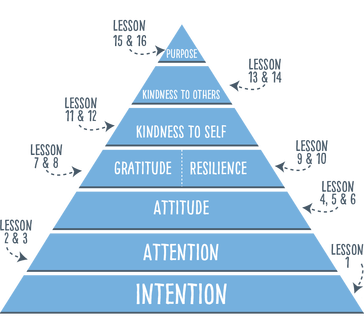 Structure of one of the mindfulness courses Structure of one of the mindfulness courses I have recently trained in a new course to teach to students aged 8-13 years - written by Youth Mindfulness. The reason I liked this course even more than my training by the Mindfulness in Schools Project (which I trained in two years ago, to teach teenagers). This course has a beautiful arc to the teaching:
What’s The Research? There are dozens of reports into emotional wellbeing and mindfulness, including the government's own paper on wellbeing. The Youth Mindfulness website shows a study conducted at the University of Edinburgh in 2014, exploring children’s experiences of the Youth Mindfulness Kids Programme. The results included:
Help me teach more young people and teachers: I am now looking for schools to teach to in 2018, so I have a favour to ask: Please could you spread the word and pass this blog onto someone you know in education. If you believe children could use a hand with emotional intelligence and cultivating skills mentioned here then please help me to facilitate that. Thank you! Neil Morbey Mindfulness Practitioner, Positively-Mindful.com Also, if you're interested in Mindfulness Certification Training for Individuals and Coaches
You can check it out here: NLP Centre - Mindfulness. In Part 1 we looked at how we create our own suffering, our own drama and our own healing - within our minds. When we forget to be mindful we often blame the Act or Actor (A) for our Consequences (C) - such as emotional reactions. I proposed the idea of the ABC model - where our Beliefs (B) are responsible for our reactions. However, because our Beliefs are often inaccurate, based on old data or old scripts embedded within us, these reactions lead to Drama. In this blog I’ll explore a more in-depth look at how this happens and what we can do to reclaim a moment of power, leading to a re-balancing, away from drama. Between stimulus and response there is a space. In that space is our power to choose our response. In our response lies our growth and our freedom. HOW WE FORM OUR REACTIVE ROLES - TESTING THOUGHTS Psychologists theorise that the ‘personality’ is formed by the time we are four or five as the mind’s primary method to survive, manage and thrive in a world of confusing social interactions and experiences. (others believe the mind remains neuroplastic throughout life). The ‘Persona’ (from the Latin for “mask; character”) is the external face of the ego (who we ‘think’ we are) and it helps us to stay safe from external social and physical harm during this vulnerable period. The persona is made of a set of beliefs, governing the behaviour. We form beliefs through testing thoughts (maybe once or twice) and then believing the resulting observation and feeling "Once you convince yourself of something it is very hard to change your mind. Especially if you've been reinforcing that belief for years!" - Guy Winch EXAMPLE OF MISINTERPRETATION Here’s an example from my life: I noticed sometimes when people pushed me away and I then had this internal thought: “My friends don’t like me,” So I tested: Test 1 = I wanted share something difficult, they told me to piss off. Test 2 = They didn’t like me when I was crying, Test 3 = I asked to play with them and they laughed at me, Concluding (tragic misinterpreted) belief = I’m not likeable and I shouldn’t share or ask for help. FORMING REACTIONS (WITHIN THE NERVOUS SYSTEM) Now we can clearly see the fallacy in that, but if the tests were painful then the belief is formed to protect them from future pain and it’’s lodged in the nervous system. The irony is that the belief just delays and draws out the pain, over a much longer period and it is often based on misinterpretations. The 4 year old me, in the example, may well now form impulsive reactions whenever that thought arises - actions like aggression or crying. This behaviour will affect future interactions - the child hides pain, because of shame, and those actions will in turn get misinterpreted by others. The cycle of miscommunication and reactivity continues. If some key people in that child’s life join the party of reinforcing voices (mum/ dad / close friends) then it’s likely that the unmet needs embed reactivity even deeper, in the following ways:
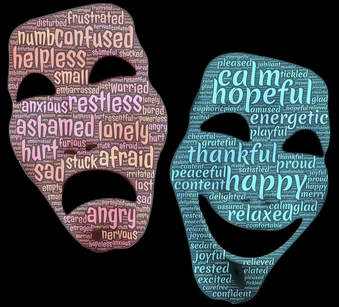 See the mask at play See the mask at play THE PERSONA ISN’T REAL - IT’S MADE OF IMAGES, BASED ON BELIEFS The Greeks wore many persona masks for theatrical roles, as I learned from clowning. For social beings like humans it is essential to have an array of personality traits and masks to protect us and help us thrive in many situations - they are brilliant mechanisms. Though, if we forget that we are wearing one, then we may identify ‘who we are’ as ‘the role’. We become the mask/persona - and we confuse drama as real life, temporarily losing the ability to step back from the role when it becomes overwhelming, especially if we are wearing masks based on ‘faulty’ scripts that have dysfunctional behaviour reactions. If we want to relax these reactions we need to first fully become aware of the mask, realising it’s based on false interpretations and it is not who we really are. "The Roles Are Not Real!" SEEING THE MASKS WE WEAR A useful model to conceptualise the roles within drama is The Karpman ‘Drama Triangle’ - originally conceived by Steven Karpman, based on the Transactional Analysis work of Eric Berne in the 1950’s. These models inform my model, outlined below, which provides a tool to recognising and then transforming the masks we wear, through a process of Enquiry & Empathy to gain ‘Perspective’ (discussed later).To begin let’s look at the three main roles of ‘Drama’ and link them to the internally triggered reactions (which could be any of the TIES; Thoughts, Impulses, Emotions and Sensations) but also look at how the reactions can be directed outwards and then inwards: 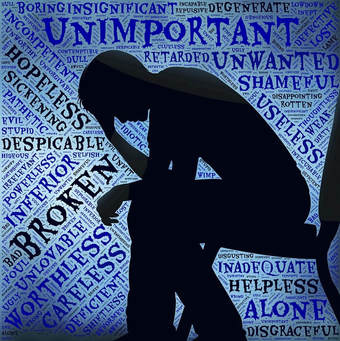 1. Victim Vampire: When we think the world is against us, feel hopeless and cannot see a way forward. We believe that life is unhelpfully happening TO us. This thinking gradually saps our energy - like an energy vampire, or parasite, which is akin to sadness and later, depression. Internally we all have an inner victim, born from our childhood injustices Thoughts are usually blank (as are words), but could include things like “It’s awful”, “It’s hopeless” “The world an ugly.evil place” “I can’t…” “I’m fed up.” Impulses include shallow, quiet breathing with occasional sighs/yawns, retreating away from others/work, tiredness, staying in bed etc. Emotions include hurt, sadness, hopelessness and shame (mixed with fear). This may include flare ups of anger. Sensations: Numbness, but subtle sensations in the eyes/tear ducts, low feelings in the heart and belly. Outwardly, This often begins by seeing the world as working ‘against’ us in some way, and relating in a way that is meek and powerless, which only serves to further dis empower us. We may get angry and move to the Critic role. Inwardly we might just feel terrible and continue with inaction, reinforcing the role. We might feel pity for ourselves and Rescue ourselves, at its most extreme by becoming depressed or suicidal. 2. Condemning Critic: When we see something unjust or that doesn't fit with our beliefs about the way the world ‘should be’ then we might re-actively criticise. On a low level we offer advice from a sense of urgency, need and even panic, which often comes across as ‘condemning’ and persecuting. The high end of the spectrum behaviour could include alienation, oppression or even violence. This can be directed inward or outward too. Thoughts are usually judgmental, defensive or instructive: “Idiot!” “Stop it!” “Get on with it!”“You should/shouldn’t…” “I need to/must…” “You can’t…” “They (other) are wrong and should change…” Impulses include forcing something to stop or change, forming fists and shaking with faster, forceful breath. A sense of needing to do something. Emotions include frustration, exasperation, anger, rage, injustice, offence (mixed with fear). Sensations: Intensity in the fists, jaw, eyebrows, sternum. Outwardly: We name, blame and shame others to get them to change as they remind us of something we hate to see (and perhaps repress within ourselves). Sometimes others get hurt in this process or we see others as victims in some way - then we might switch roles to that of a rescuer. Inwardly: The ‘Inner Critic’ can be a powerful force to motivate us, but when it become ‘condemning’ we begin to blame ourselves and quickly switch back to a Victim or we cover it up with Rescuing, reinforcing the role and proving to ourselves that we need more criticism! 3. Reactive Rescuer Everyone loves a hero and we secretly all want to share in that glory. The rescuer barely stops for a breath and tries to fix things to avoid others from feeling pain. Thoughts are usually appeasing, diminishing or heroic / noble, like: “You’re right!” “It’s not that bad….” “You deserve better…” Impulses include trying to cover something, appease, hold hands up, hug, connect or talk over. Emotions include guilt, pity, embarrassment, anxiety, pride, panic or even sexual arousal (depending on the sponsoring thought) Sensations: Blushing, throat closing, stomach dropping. Outwardly: We get involved in situations that are not our business - we offer advice or reassurance, without it being asked for. We do things for others, without consent. This comes from an energy of fear, guilt and sadness. This behaviour often feeds victim mentality in others. We forget that their pain is ultimately their responsibility - their work. Until they ask for help, or it is obvious that it is needed we only dis empower by rescuing. They may become ungrateful for that, in which case we will become the Critic or Victim again. Inwardly: The part of us that binges and uses addictions to mask emotional discomfort. It prevents us from self-reflection and facing up to the consequences of our actions, because, like the Victim we perceive this as an unjust world, which needs to be fixed so as not to be seen or felt. NAME-BLAME-SHAME Within this concept, whenever our words and actions are governed by an emotional reaction we are expressing from a dramatic role. We judge internally first and then we judge others based on what we suppress in ourselves. Eg. If I interpreted the belief (from when I was younger) “I shouldn’t show off” when I was regularly told to ‘shut up’ then I might learn to suppress it. Then when I observe others acting expressively I might judge them, covering up my own pain by judging them - projecting a false image onto them by: Naming: I give them a label, either negative (eg. Stupid) or positive (eg. amazing). Undue admiration can be a form of rescuing, whilst most negative labels are usually part of... Blaming: I see them as at fault, as wrong, as an ‘other’ (known as othering) - perhaps even an ‘evil’ other. I might feel annoyance and may begin advising as the Critic (eg “They should shut-up!”) or I turn blaming inward, leading to… Shaming: Internally I use my Critic and Victim in negative comparison = “I can’t do that, I wish I could. Outward shaming may also occur from the perspective of a Rescuer (eg. “I need to celebrate this person and tell others to leave them alone!”) or Critic (eg. “I’ll make a joke about them”) OTHERS NEED TO CHANGE Ultimately all roles are based on a victim mentality - believing we live in an unjust world, that is hopeless - a constant, never-ending struggle. When this philophy and the corresponding behaviour is supported by rescuers it becomes a source of small power. We can use victim strategies to get some small needs met. Letting go of that small leverage can seem crazy, even impossible, so we may cling to it, to our identification as a victim and how others need to change, to make us happy. We use othering to forget that we are all similar in this regard. BEGIN WITH SEEING IT - SPOT THE SQUIRREL Alcoholics Anonymous have a saying: “If you spot it you’ve got it”. Once we consciously name what’s really happening we have the power to pause and then act positively. These games of naming, blaming or shaming are ways we get distracted from the reality of the feeling senses. It’s like in the film ‘Up’ when the dog gets distracted by a squirrel. So we simply play a game of ‘Spot the Squirrel’ or ‘Spot the reaction’ that the body and mind has, before we could consciously respond. These could be:
So to begin with see if you can spot the Thoughts, Emotions, Impulses or Sensations of one of the roles and then we can spit the role we are playing and maybe even the role we are casting onto others (including the world around us!) TL;DR
The basics of this are:
In Part 3 I’ll discuss ways in which ‘Presence’ can put us in touch with different roles, which we can influence and choose. Stay tuned, or if you’d like to reduce the drama in your life now, contact me today for a 1-1 session. LIFE IS PLAY AND PRESENCE I wrote once before about changing the game we play - the drama triangle. I have since reflected upon this concept and refined it, adding useful tools to help us come back to balance and step out of drama whenever desired. I believe that life is ‘play’ - be it a drama, a romance, or a comedy of errors! Yet perhaps it is simultaneously a perfect single moment, when we are in ‘presence’. The processes described in this blog provide ways to remind us of that presence and step back into the moment, any time we choose, using empathy and perspective. “All the world's a stage, And all the men and women merely players; They have their exits and their entrances, And one man in his time plays many parts” OWNING YOUR STORIES We do this with the stories we tell ourselves, which we have interpreted and embodied from years of social interactions (which we call ‘conditioning’). Rational Emotive Behaviour Therapy (REBT) is a type of cognitive therapy first used by Albert Ellis. It focuses on resolving stressful emotional and behavioural patterns, much like the beautiful ‘Work’ of Byron Katie. The goal of these therapies is to help the person reframe their personal truths - changing painful and irrational beliefs into more truthful, kind and rational ones, through the process of self-enquiry. UNDERSTANDING HOW WE DO THAT Ellis gave us the ABC model to show us how simple it is! He recognized that when a single stimulus, or ‘Act’ (A) happens there can be many Consequences (C). For example, a man walks past a crowd, smiling to himself. This simple ‘Act’ results in the following: Observer (1) smiles back at the man, with a sense of happiness. Observer (2) feels offended, and frowns at the man. These different ‘Consequences’ (C) demonstrate that A is not necessarily directly responsible for C. That’s because different individuals have their own subjective ‘Beliefs’ (B) at play. In situations involving the mind (that’s pretty much all observed situations!) the Belief is the cause of the Consequence - because it is the lens we see the world through.
(Observer 2: Thought “He’s mocking me”, Impulse: Frown, Emotion: Anger, Sensation: Tension) ALL DRAMA IS BASED ON BELIEFS Most of our actions in life are based on ‘unconscious’ beliefs, embedded in the body and nervous system. Stress reactions, like in Observer 2, tend to activate the amygdala and reduce the functions of the higher, open and optimistic mind, through the release of cortisol and adrenaline into the blood. So it will be even harder for that person to recognise that a ‘Belief’ within themselves was responsible for the reaction. This means Observer 2 may then blame the ‘Act’/‘Actor’. If we go through life unaware of these beliefs, due to stress, we identify as a role and we get caught in ‘Drama’. If we practice mindfulness we wake up to more consciousness of our thoughts, and we can then exercise choice. So I’ve added a bit to the end to show a way back out through the process of Empathy and Enquiry. D: Drama: the play of scripted roles, which we believe are in ‘society’ but are actually in us. E: Empathy & Enquiry: the feeling into emotions and questioning of our thoughts. EMPATHY AND ENQUIRY
If we challenge our Beliefs in a kind and loving way then we can learn something about ourselves, we can let go of damaging emotions and come to a peaceful understanding and conscious actions. This process would take us back through a reframed alphabet: E: Empathy & Enquiry - pause and ‘feel’ into the emotional reaction. This may require having a SEAT, and listening to the body. Asking it what it is ‘feeling and needing’ (as in the work of NVC) D: Decide - making a choice to ‘Bin it’ (let it go and move on), ‘Bag it’ (record the experience for processing later) or ‘Bring it’ (address this right now). C: Curiosity - the enquiring mind asks: “What am I believing? Is it true?” (Check out ‘The Work’ of Byron Katie). B: Befriend - remember that this is a friendly universe if we act and think it so. This is optimism - creating an optimal outcome through choosing thoughts that are true and feel good. We can start by befriending ourselves, and if we have the capacity, we can befriend the triggering Act (or Actor) This is covered more in Part 2. A: Act/Ask: we can now act from a place of wisdom and love, which often involves asking questions for clarity or to help get needs met. Or a more simple question might be “Would I rather be right, or happy?’ TL;DR That is a lot to remember, but really all you need to remember is:
This is the first part. Next week in Part 2, I’ll show some more techniques to come out of drama by identifying some of the main categories and characters our beliefs take, and then in Part 3 a simple way to change the scripts! Part 4 will go deeper still. Stay tuned, or if you’d like to reduce the drama in your life, contact me today for a 1-1 session. Sleep - one of the most important elements of good physical and mental health. It is well known that quality sleep is more important than quantity of sleep, within certain parameters, and depending on age. Within this blog I'll talk briefly about that and then about how you can, not only attain better quality of sleep, but also to use it to help you mould your mind to your heart's desire! A BRIEF SCIENCE OF SLEEP At night our mind is very active whilst our body is quiet. Cellular repair occurs at a higher rate and the Glymphatic system in the spinal cord and brain clears out accumulated waste products, which can only occur during unconsciousness. Modern science understands that there are about 4-5 stages of sleep. Each stage takes some time. Stage 4/5 is known as deep or 'REM' sleep (Rapid Eye Movement). In this deep sleep the brain rests and re-organises. It is healing time for the brain to cycle through these stages. Other stages are more about refreshing the mind over shorter periods. Without dipping into REM sleep our brains and bodies grow tired and unfocused. POWER NAPS Power naps of 0-30 minutes will take you to stage 2 at most, which promotes refreshness. More than this will risk going into stage 4-6, which will make you groggy Also adding a caffeine amount, like coffee or tea, as you sleep, can help, because it takes about 30 minutes to come into the blood. Perfect timing for power naps. Alcohol blocks REM sleep. BLAME EDISON Even Thomas Edison power napped! His attitude and invention (the light bulb) helped break us out of our 'Circadian Rhythms'. His attitude was that we didn't need sleep - it was considered 'lazy'. Unlike Eddison I think 700 million years of evolution and modern science shows us that quality sleep of 7-8 hrs is probably one of the most important functions of the human body, to stay healthy. See the 8 minute video below for more information. MINDFUL MOMENTS Mindful moments can give us similar results to that of a power nap, especially when on lives in non-resistance - because then our pre-frontal cortex is a bit quieter, when we are non-judgemental. The art of meditation is to enter into a relaxed awareness, that holds all thoughts, sensations, emotions and impulses in a space of non-judgemental, or even 'loving' observation. You see there are two approximates 'ways' or 'attitudes' of looking at things, one is in resistance (judgmental, analytical, fearful) and the other is in non-resistance (accepting, allowing, appreciating) and this tends to be quiet and serene, even loving! Resistance is negative, for it depletes the body. Mindful moments break the cycle of negative thinking and put our minds into a restful awareness, which can be even better than a power nap, because it also helps us discover things about ourselves, experientially! HOW TO GET QUALITY SLEEP Cultivating 'quality' is the key, (more than quantity). So how do we do that? There is a lot of research on this and still no one really knows for sure. What has been deduced so far is that reducing noise and light in the room can be incredibly helpful (or using eye masks and ear plugs!) However, my theory is much more subtle and impossible to measure and it comes down to cultivating a similar mindset as we see in meditation. Let me explain... 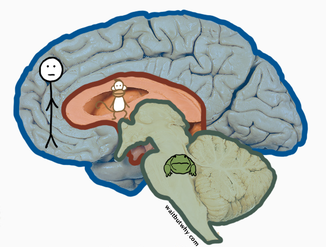 RELATIONSHIP WITH YOUR INNER ANIMAL There is an old, but interesting theory of how the brain can be seen as split into 3 types, according to evolution: The Reptilian Brain, which deals with bodily functions, The Mammalian Brain, which evolved to deal with emotions and chimp-like social structures, and the Neo-Cortex, or 'Human Brain', which is the most recent extension of the chimp brain allows us to imagine complex things that don't exist, using logic and reason. It is thought that this brain evolved with our use of language. We can almost imagine these 3 parts of the brain in relationship with one another, as this long, fascinating article by WaitButWhy discusses. This is one way of looking at the brain, that may not be wholly accurate, but helps us to get an understanding of the relationship within the brain. When we place our attention, with our rational mind, on our body, with a judgemental attitude the body often responds like a chimp or reptile would - with a reaction of tension and emotion (like fear/ anger). If we cultivate a non-judgemental (or loving) attitude with the animal parts of us, they will gradually soften and relax. This is likened to horse whispering vs forcing the horse to comply. It takes time to reestablish this trust. It is only when there is self-trust that one can sleep soundly. Trust is an essential part of being able to sleep with another - even if that other is a part of you! NO FORCING Alan Watts talks about not being able to force anything. If you keep forcing something it will eventually push back. When we find ourselves in insomnia, for whatever reason, it can create panic. Thoughts can quickly become negative and unhelpful. "I need to sleep" is an unhelpful thought. Then we knee-jerk react into all kinds of negative postures, adrenaline inducing thinking and breathing (as described in my last post, about the Stress Spiral). This subtle 'need' can be a hindrance to the trust that is required for healthy sleep. When we trust that our bodies will naturally fall to sleep then it takes care of itself. So how do we reestablish trust? I have found these practices to be effective: 1. Ask and Listen - be open to what is. This could be a meditation, a jourrnalling exercise or even talking to yourself. 2. Breathe and Move - proof that you trust. This could be yoga, mindful walking, catharsis or even exercise. ASKING AND LISTENING Jamie Catto calls this 'Full Body Listening'. Asking the body what it needs, and listening for a response is a sign of respect and empathy. Breathing and moving calmly provides space for the body to be. This will, in time give you a better relationship and perspective on what your animal body/mind wants and needs in order to trust and therefore sleep soundly. CHANGING HABITS We used to have very different Circadian rhythms. Often people would wake up in the night and reflect, think, write, talk or read to candlelight. It was a quiet time for contemplation. When the mind was ready it would get sleepy again, usually after about an hour. But resistance to this process would prolong it! Whereas a natural 'allowing' of the minds changing states can give you plenty of sleep, help you get more done and allow you to feel good about it! The trick is to let go of the negative thinking - the idea that you'need' to sleep 8 hours. This can be tricky and I have specific tools to help with this and to combat insomnia - contact me for more information. CULTIVATE A NIGHT ROUTINE
This is a simple tool - setting the body and mind up for sleep can be a useful way of influencing the quality and regularity of sleep. I have therefore developed a super low-energy routine that will allow you to build trust, refocus positively and therefore allow the subconscious and animal parts of the brain and body to relax and sleep well. This involves a tricky art of awareness, allowing and appreciating. It builds trust slowly, but in order to be effective it must be repeated many times. This is why meditation is only effective is you practice regularly. The NIGHT routine will attune your mind to look for things that resonate with the focus of: NOTE: Take a moment and note what you did in your day. INSPIRE OR INQUIRE: Do something to inspire you, or recognise what/who inspired you today, OR ask questions to re frame your day. GRATITUDE: Place your mind on something or someone you feel grateful for. HONOUR: yourself. Take a moment to honour your needs, especially physical needs. TOMORROW: Decide on a wake up time, visualise the start of your day or intention. I also developed a slightly longer and more involved routine called DREAMTIME. Try one for yourself, and let me know how it goes. Here is the full NIGHT routine. Enjoy or develop your own, and sleep well! For more help contact me for some 1-1 sessions and let's allow the mind to find a peaceful sleep. Last week I ran another session for a private company. In the session everyone agreed that mindfulness could have a hugely positive impact in balancing their minds. They recognised that compulsive analytical and future based thinking has become ingrained by their lifestyle. The fact that it was now a habit and addiction meant it was very hard to relax and gain perspective on difficult situations. Practising the skill of being in the present moment, with less judgement can balance that and provide more ease, relaxation and focus. So I posed the question: How could you bring this into your work day and your workplace?
1. Use the commute as part of a morning meditation routine The morning time is a great time to practice, because it can set you upon a trajectory. Some people (like me) have a lot more energy in the morning. If you find you are an evening person you can flip this to the evening commute, or maybe even adopt a bedtime practice. Meditating before bed has been shown to give the subconscious mind a positive focus, which helps you think clearer the next day, and promotes healthier sleep. Eckhart Tolle describes the most simple practice in his book ‘The Power of Now’: When you are unoccupied for a few minutes, and especially last thing at night before falling asleep and first thing in the morning before getting up, “flood” your body with consciousness. Close your eyes. Lie flat on your back. Choose different parts of your body to focus your attention on briefly at first: hands, feet, arms, legs, abdomen, chest, head, and so on. Feel the life energy inside those parts as intensely as you can. Stay with each part for fifteen seconds or so. Then let your attention run through the body like a wave a few times, from feet to head and back again. This need only take a minute or so…” - Eckhart Tolle, The Power of Now So you see, one can meditate on the bus, in bed or waiting around. Remember that meditation is a deliberate practice - choosing to be in the ‘here and now’, relaxing judgements and simply being with your experiences.  2. Take regular breaks and ‘Mindful Moments’ It is often said that Mindfulness is more like Re-Mindfulness. It is simply reminding yourself of what you know, but often forget, because of the myriad of life situations that you deem as ‘important’. Remember that important comes from the French word ‘Porte’ which means ‘carry’. When we make many things important life can feel very heavy and the body takes this strain as tension and stress. We want to remind ourselves not to confuse ‘life’, which flows through us in this moment (lifeforce), with the ‘life situation’, which is just a set of beliefs, expectations, memories and ideas, relating to the place we find ourselves in. The life situation is rarely as important as ‘life’ and if we overburden ourselves in lifestyle then we risk interrupting life’s flow and damaging the body and mind. Relaxation is a way to come back into flow. Repetition is the key to remembering that we are more than our situations. So by taking regular mini-moments in the day we can build in the reminders that we are always ok, inside. We can tune in at any time. The more we do this, the easier it becomes. A mindful moment can be as simple as a FOFBOC, which I teach to young people. Listening and feeling inside the body and taking your time is at the cornerstone of this practice. It is like hitting the reset button on the compulsively thinking mind and dropping into the senses for a brief period of time. 3. Practice Gratitude and Generosity Emotions are the key to flow; being joyfully engaged and focused in what you are doing, without mental resistance. This state can be enhanced by cultivating emotions like joy. The practices of appreciation and altruism have been shown to provide the most beneficial emotional lifts, bringing you into joy much easier. I created a tool called a LIFT, to give you meditation, mindful moments and uplifiting emotional practices in a short 2 minute window! Anyone can do it at any time! LIFT stands for:
LIFT UP WITH AWARENESS AND BREATH Awareness of breathwww.positively-mindful.com/blog/breath-works-practices-to-program-bold-focus is the first key, because as this spiral begins with focus and breath so can we interrupt it and end it. Refocusing into the present moment. Noticing and calming the breath, these are two ways to come back into presence. Then using gratitude we can ground the emotions away from fear and emotional reactivity and towards generosity with our time and energy. ANCIENT KNOWLEDGE Tribal societies have long known that when lost or scared in the jungle often the biggest enemy is fear, stress and panic. These things are in the mind - whereas hazards and danger are based in reality. They found the best thing to do when lost or scared was to stop, take a knee, listen to the surroundings, feel your body and ‘tune in’. Through one's calm senses one virtually hear the pulse of the environment. This practice not only helps you find your way, but primarily it calms the body and helps one come back to a more objective perspective of reality. This is the best way to deal with rising panic, which is the greatest threat to an animal, when in danger. A side effect is that one also remembers the beauty of the world. Gratitude and generosity are simply side effects of this. APPLYING IT TO THE OFFICE In the modern office we are removed from wild nature, so if you consciously practice a LIFT regularly you’ll build these reflexes of mindfulness, gratitude and generosity into your automatic response to the indicators of stress. The film After Earth showed how this can work very clearly. We can learn lessons from tribal people and introduce moments of rest, stopping to realise the truth of our situation and bring calm into the body and mind. Enjoy! Contact me if you want a free mindfulness session in your office! Calm that stress!And if you liked that you can even apply this survival guide’s advice in the office - Stopping and building up a base of knowledge, assessing objectively from a relaxed state. 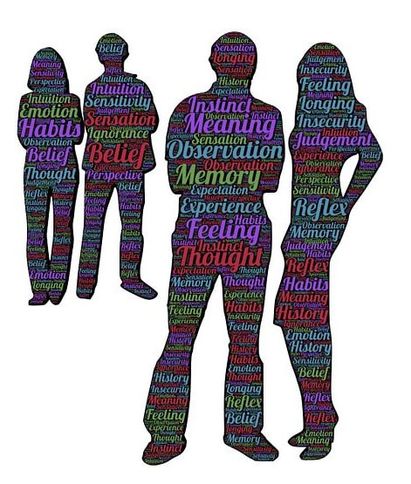 PSYCHOLOGICAL ABUSE IN RELATIONSHIPS STARTS WITH COERCION The term ‘Abuse’ is marked by the 'prolonged and repeated' use of fear, control and coercion to get an 'egoic' need met. An egoic need, it is something ‘we think we need’ and often results in a strategy of defending an ideology or belief; putting up walls of judgement and defence, instead of connecting to ourselves or others with empathy. For instance, the simple belief that ‘I am right’ might close the mind to hearing other perspectives and opinions. Or a belief that ‘I am trapped’ for example, might lead one to trap others as a form of feeling less trapped themselves - particularly in their relationships. Addressing and changing these types of beliefs and behaviours is part of why we engage in relationships and. Growth within healthy relating, happens through skillful communication. If behaviours of coercion or control persist, without consent one could label it as abuse. MINDFUL AWARENESS - WE DO IT TO OURSELVES Some internal beliefs get stuck through being unaware of them. Mindfulness invites us to recognise the mind/body and gradually increase our awareness of the Sensations, Emotions, Impulses and Thoughts (SITE). This can help us to recognise our internal beliefs and respond to them - to reshape them without violence. With this level of awareness any internal stress reaction or external coercive behaviour can be more easily recognised early. By positive I mean one that generates an outcome that is beneficial to all, like a kind and honest conversation. COERCION VS CONSENT + COMMUNICATIION The opposite of coercion is respectful consent - the voluntary giving of one's time, energy and attention. I often say that my acronym for L.O.V.E is to ‘Let One Voluntarily Express’. It starts within each of us, to notice and allow own internal mind stuff to be there, without knee-jerk reaction of suppression or projection. We can then more effectively investigate it, understand it and either 'let it be' or change it gradually, without violence. This makes it easier to allow other people to express themselves and creates space for both people to 'be' (themselves) and see any coercive behaviour early. Skillful communication comes with honest 'yes's' & ‘no's’ (boundaries) A 'no ' needn't mean complete rejection and can still make it likely for a win-win situation to occur, because it is honest. Real intimacy happens through sensitive and courageous honesty; allowing relationships to become even more beautiful because of the flaws and vulnerability involved in letting go of control. It can see very scary to do these things, at first. "One had to cram all this stuff into one's mind for the examinations, whether one liked it or not. This coercion had such a deterring effect on me that, after I had passed the final examination, I found the consideration of any scientific problems distasteful to me for an entire year." 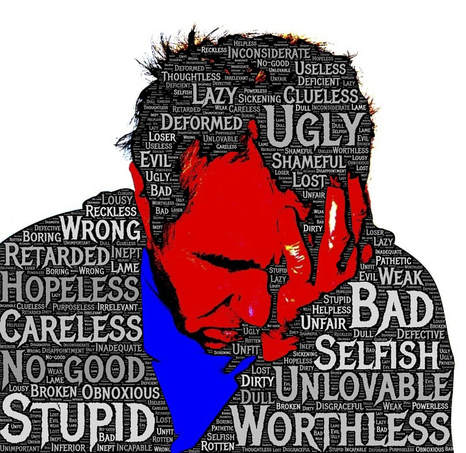 WE ARE ALL ABUSED AND ABUSERS All of us have been too under-resourced (of time/energy/awareness) at times, to deal with the internal stress responses and be aware of deeper feelings. There might be a feeling of insecurity. In this state we sometimes forget that we don’t need external validation to be 'ok' and we might begin to use coercion to get it, even on those close to us. On the receiving end, if we then do things that the body doesn’t want it can cause pain and damages our own self-trust, as well as the relationship trust. Sometimes one might then blame the other as ‘abusive’ or label ourselves as ‘a victim of abuse’. It is important that we ARE allowed to do that, so that we can seek help and/or retreat and protect ourselves in the first instance and gain perspective. The danger comes in dwelling in a place of stress reactions, including blame and shame, without noticing our belief patterns and the truth of them, thereby developing internal patterns of abuse, such as these: 1. Initially one shuts down emotions and disconnects from bodily senses. Numbing the pain ‘seems’ better - but of course pain is your body’s way of telling you ‘no’. We let fear and expectations rule our responses more often than listening to the body and responding with respect. 2. With repetition gradual conditioning occurs, rewiring the brain for external validation. We do this to ourselves and each other by repeatedly overriding the body without taking time to understand the true source, One might get a misunderstanding that the source of pain is external, and seek to rescue ourselves by trying to appease an abuser or get approval externally. 3. One develops craving and addiction (or co-dependence) to the role or the ways of relating/thinking, or even to a abusive person. When this role/relationship is threatened life can suddenly feel terrifying. Feelings of fear, anxiety, abandonment and hopelessness can occur - this pain and confusion is because one’s safety has become associated with the role and relationship. 4. One becomes a passive ‘doormat’ and unconsciously feeds the abusive pattern. Eventually the addiction becomes normal and familiar. We seek out relationships that supply similar behaviour. The neurological pathway of that pattern is well used, and becomes like a slide back to the negative behaviour. Humans like ease, familiarity and certainty, because it takes less energy and helps them feel safe. 5. Fatigue sets in, through holding unconscious resentment and fear/distrust. Without awareness of the true source of pain hopeless beliefs emerge and these sap vital energy. The fear underneath is held as tension in the body and anger in the mind and will eventually emerge, often violently, if not dealt with as early as possible. This is the body’s way of defending itself, but it’s a risky strategy for physical and mental health for everyone involved. Long term tension is destructive. 6. Eventually one loses / forgets one's deeper identity as a beautiful and inherently valuable being. When we are conditioned to identify as hopeless we may think we ‘deserve’ the abuse / pain. This is deep shame; humiliation or distress at one's own condition or existence. Toxic beliefs of ‘I’m not good enough’ or ‘I’m a liability’ can become normal. This can lead to depression, chronic anxiety, panic attacks and even homicide or suicide. 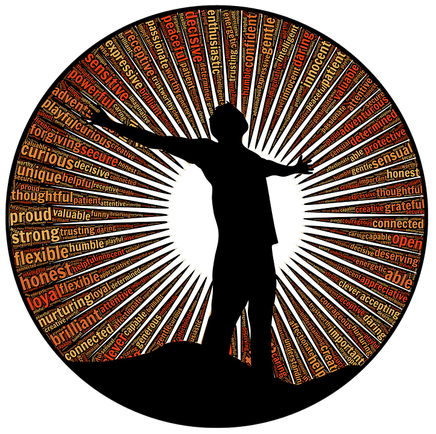 IT TAKES COURAGE TO LET GO OF BLAME AND CHANGE SOMETHING I’ve seen people emerge from the depths of this shame-blame cycle to recover and become resilient, happy individuals with healthy relationships. This article is not concerned with ‘who’ is at fault, but is interested in helping each of us recognise our potential to help ourselves and one another. We can trace the origins of abuse back thousands of years and never get to the source at fault, because the source is always ourselves. Alan Watt’s calls this “The Birth of Responsibility” - seeing that hurt people, without mindfulness and love, always hurt other people, and we can only change that by working on ourselves first. I’ve laid out some ways to do that here: 1. Gradually raise awareness of emotions through regular check-ins and diary entries. Regular Guided Meditation is a great way of tuning in, especially if you are out of practice. It also may help you realise your current needs (like rest) and then you can plan to meet them. Once you are aware of needs and emotions, expressing them is the next step - releasing tension is important. Find healthy catharsis for the emotions. Eg, for anger try a ‘hand scream’ or a ‘fuck-this’ meditation. To promote calm try conscious breathing and create some space for perspective in your day, even if that is only 1 minute, to FLIT between tasks - take a mindful moment to breathe and listen in. Writing things down has helped me and many others understand themselves. It may be painful and messy at first, as we become more aware of the pain. With time and acceptance we can change. 2. Reaffirm to yourself that you’re enough and you’re OK. Silence can sometimes make the negative voices and beliefs even louder and stronger, at first. Find ways to give yourself affirmation - ways where you really feel it, without the need of another. Imaginative Meditations like Metta Bhavana (Loving Kindness) is one method. The STOP technique can help you find a balanced truth and the NOD technique may help you reconnect to an image of yourself/your future that feels positive and helpful. 3. Educate yourself of the drama triangle roles you play. Simply ask yourself 'what role am I playing right now?' and then continue to play it, whilst observing with humour and interest. Awareness and allowing is enough to relax one’s hold of the masks one wears and projects onto others. Gradually this will help us let go of the game of ‘name, blame & shame’ and the pattern of ‘hurt people hurting people’. It will create beauty and stop us feeding the drama of victim-critic-rescuer roles. I learned this from Fooling - the recognition that we are all fools and that’s OK. Let’s make the pretence conscious and be interested in our mind’s coping mechanisms. 4. Notice addictions/patterns, and yield to them mindfully, whilst processing them. Instead of shutting them down (which is very tiring, because it takes willpower), experiment with them - go into them consciously to really feel what it is like to experience them. Take your time. Afterwards feel the aftermath, ask yourself if this pattern of behaviour and underlying beliefs serve you. Use the NOW process to then resolve a new way forward. Feel this fully too. By recognising the triggers of the TRAP we can then use other tools like ‘Mental Contrasting’ and ‘RE-ANCHORing’ to overcome addictions mentally, with loving repetition. 5. Enforce one's boundaries. Say no often! A vital skill that can only be learned by experience. Saying no will allow you to get space and perspective, to distinguish your feelings from your judgements and projections. If this feels terrifying try practicing outside of your normal relationships first, as detailed in rejectiontherapy.com. Ask for things from friends or strangers. See what it's like to receive honest answers, including rejections. Getting and giving a ‘no’ is often not as bad as one thinks it is - try it! This will help you give healthy boundaries within your relationships. You can always change your mind. And finally, perhaps most importantly...  6. Share yourself - ask for help or talk to a trusted friend. If you feel deeply lost in shame then using these tools with another person’s help greatly increase their effectiveness. When we are lost in confusion it often helps to have an outside perspective. When our pain is witnessed, with openness and kindness, it often helps us to accept ourselves and let go of it. Seeking professional help is always an act of self-love. At the very least seeking a trusted friend to confide in, because pain shared is pain halved and happiness shared is happiness squared! Abuse resource - if you need urgent help. 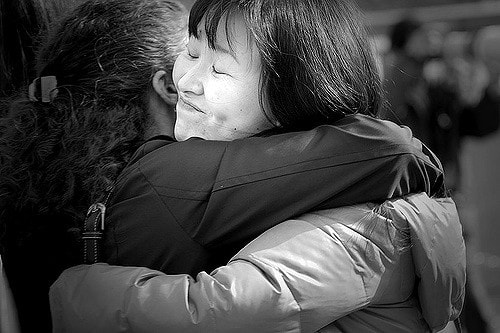 Hugging usually helps! Hugging usually helps! The psycology of abuse from Psychology-Today states: “Here's the thing. It all comes back to us, to our responsibility and accountability. But, in this case, it comes back to responsibility to ourselves and accountability to ourselves. Instead of just riding the wave, if we choose to mindfully examine the nature of our relationships and make a determination of what is acceptable and not acceptable to us, of what feeds us, rather than bleeds us, then we are living, and loving, authentically and with mindful awareness.” I hope you enjoy these tools and if you are noticing that you are falling into the trap of coercion or abuse come and see me for 1-1 guidance and get yourself out of the negative pattern, with love. Neil@positively-mindful.com "Truth resides in every human heart, I work with many varied clients, some who experience abuse. My personal and professional relationships have been varied and often involved low level coercion. This has all helped me grow in wisdom. Some of this growth has been painful. I have sometimes misunderstood the pain in relationships and become confused and stressed, reacting with blame and I've learned from those experiences, to communicate better and become more aware of what's happening in me.
I propose that our primary relationship and source of wisdom is actually within ourselves and we become most reactive at our own stress-induced thoughts. The base reactions are known as ‘Fight, Flight, Freeze’ and Appease. One tactic of these stress-reactive states is ‘coercion’ (from Latin coercere ‘restrain’, from co- ‘together’ + arcere ‘restrain’). A stressed mind that fails to meet a need through coercion may escalate to more violent forms of defence and control (like physical abuse) which is not discussed here. This article seeks to raise awareness, so that early stages of internal and external coercion can be resolved and transformed away from stress, blame and shame and into awareness, wisdom and intimacy. This morning I woke up thinking busily and then worrying, relentlessly This has happened before and I'm sure it'll happen again. It's conditioned into me, by me, and by the culture around me. I languished in it for a good 30 minutes, then meditated, wrote, read and remembered that I can't force this away forever, because I know that harms my body and creates more depression sooner or later. So, I can acknowledge it, admit it to myself and imagine there is a gift in this for me somewhere. So I admit it to you now - my voices of:
Steve Jobs once said: "It is impossible to connect the dots looking forward - you can only connect them looking back. You have to trust in something, because this will give you the confidence to follow your heart even when it leads you off the well worn path." Last week, after finishing 5 days of 'Fooling School' with the enigmatic Holly Stoppit, I was left with a lot of insights and a lot of confusion. Fooling is the art of emptying yourself by allowing whatever is present to be acted out and seen as 'a mask'. Something you wear, periodically, and experience the world through. It could be a mask of smugness, or victimhood, or, as in my case this morning, the inner critic. In the workshop we had a lot of fun with this and also experienced a shed load of vulnerability, joy, tears and shared emotions with 7 other fools, 10-6 Monday to Friday! One insight was the idea that perhaps it is when we have a glimmer of awareness that this emotion, feeling and voice in me is like a ‘mask’, one of many that we slap on ourselves and onto other people (seeing them as a character looking at us), that we can we hope to face it and relax our hold on it. But unfortunately it rarely just dissolve - It is there for a reason. I created it and wear it to protect me from feeling something. Failure, judgement of others, the deep painful reminder of something I bought into long ago - a belief that I'm not enough. So how then do I move on with my day? Accept it and be interested in it. Give it some space to be heard and seen. Ask it some questions. Breathe with it and feel. Let go of pushing it away, just for some time, maybe 20 minutes and play with it. Maybe it has some undiscovered treasures for you. Perhaps it is good that it isn’t dissolving instantly. One of the most inspiring quotes I gleaned from Holly this weekend was the subtle art behind fooling: "Be interested, not interesting." When I stop trying to be interesting, good enough, appropriate, mindful and wise I start acting out and accepting that I'm imperfect, messy, ugly, fragile and weak. It doesn't mean I'm like this all the time. It means I'm like this right now and I can witness and follow that for some time, to see where it leads. When I allow it, breathe with it and accept it then I sometimes find it transforms into an insight; a learning about myself and then it becomes something truly inspiring. My critic today reminded me to be more responsible for enjoyment of my day, to notice and appreciate my situation, to look at what I've got instead of what I don't have and to see if it's possible to vulnerably trust that it's all working out and then I find some inspiration to keep working, playing and looking for ways that this life is 'flirting with me' - things that I’m attracted to and keep me exploring. So, I went for a run, climbed a tree, came back and launched into work, following my inspiration (it might ebb away again any time soon). I'm sharing this in the hope that you'll see some of your masks, and the masks you slap on others. Maybe you'll be inspired to work with Holly or me as we both offer playful and mindful ways to access inner acceptance. I'm very grateful to Holly and to Steve Jobs for 'reminding' me that I'm a fool and help inspire me to be hungry for more. I'll leave you with this video of Steve Jobs talking more about his passion and what helped him to stay foolish and stay hungry. With Mindfulness I like to think of three steps that we can take on the journey towards appreciation and enlightenment. I use these in the following ways in a 20 minute meditation sometimes:
This last aspect is seen by some as ‘not in touch with reality’. This is true, of course. What is reality anyway? I choose to practice this only after a very objective observing of feeling and thought flowing into and around my body. The reason I then use the imagination to conjure positivity is because it helps me in my earthly day to be in states of
Translating this to the real world. These states are very useful. They foster joyful engagement, positive action, calm relations and effective productivity. We can also achieve these things without being in those states, but it takes a lot more willpower, energy and generally is not as effective, because it doesn’t feel as good. So one more mind imagining that I use outside of meditation is: ‘seeing people as part of nature’. Imagine this: You know that moment when a car honks art you and you get a flash of extreme irritation shortly followed by a swear word and imagining how rude and uncaring the driver is? Well, what if you didn't have that reaction? Or, more importantly the thought behind it? What if all you had was the sensation of shock from the noise and then a release? A bit like when a dog barks or a baby cries or thunder rolls. With the natural phenomenon it shocks you but then you let it go. Because the story about it - your thinking is different - we see those things as innocent parts of nature. We often see fellow humans as…. rude, selfish, mean… we forget they are just a part of nature too. We think the fact that they have developed language and a deeper consciousness that is capable of imagining complex things, including morality, to mean that they ‘should’ behave differently.  A different idea of our nature: In this article I want to posit a different idea - a game of the mind that can help us act more skillfully, cooperatively and appropriately to people and situations, but mostly, that helps us let go of the stresses that tense up and eventually damage our bodies. What is we saw people as we do natural (and innocent) phenomenon or creatures. Here are some examples: Angry car driver: See them as a honey badger! Irritable, tenacious, not to me messed with and adorable! When I saw his behaviour as that of a honey badger the way forward was clear and without emotional resistance - give the honey badger some space. If you mess with one of those things you might overpower it but you are going to get torn up in the process. But at the end of it - IT DOESN’T MATTER IF HE WAS IN THE WRONG AND I WAS IN THE RIGHT. I might also alert the police, calmly and easily that there is a honey badger (dangerous driver) on the loose. Not for revenge or malice, but to protect others. Noisy person on the bus? See them as a noisy baby! What would you do? Either let it go, empathise and enquire what is wrong or politely ask for it to be quiet, knowing full well that because it’s a baby it may not listen to you and may even get louder. But you don’t have to take it personally - because it’s a baby! If you just see them as an annoying human who ‘should’ be quieter, then you either sit there fuming (damaging your body) or get aggressive and further incite aggression. The baby image isn’t infantilizing - it is conscious playing with ideas to promote more skillful responses and a healthy body. Boss imposes power over you by scolding you at work? See them as a big powerful bear! If a bear tells you what to do I suggest you agree and do it. You wouldn’t hold it against the bear. You might also look for ways to appease the bear, distract the bear or soothe the bear, but not out of hate; out of respect for the bear’s power. On a wider sense, if it is an angry bear you might also take longer term steps to contain it or tame it. Same goes by imagining a street gang as a pride of lions. Summary All of these things reunite the idea that human behaviour is natural, not super-natural. Because our evolved brains seek meaning and therefore add all kinds of expectations, ‘shoulds’ and blame onto other humans, which we wouldn’t with more ‘innocent’ wildlife. By introducing the image of a wild nature back onto our fellow humans it can relax our holding onto judgement and help us to let go, returning to a balanced view, then taking more appropriate, not reactive, action and responses. I invite you to try this in your day, with the three steps;
Let me know how you get on! And Enjoy! x
NEUROSCIENCE At the base of the brain, near the spinal cord, there are several parts that deal with and process incoming information, collectively known as the Reticular Activating System (RAS). It is like a filter, letting through certain bytes of data from the myriad of sensory information. The filter is programmed through practice of pattern recognition. Repeatedly thinking, embodying or expressing stress-associated thoughts, words or actions creates that imagery in the mind. Repeatedly focusing on pain programs the RAS to look for patterns that match that programming. (Eg. if you keep saying ‘the world is messed up’, your RAS looks for evidence to support that and filters out opposite evidence.) This is the very simplified neuroscience, but it helps to think about how our language influences the pathways of the brain and our perception of reality. Language is a tool. First we make the tool (choose your words) and then the tool makes you (affects the patterns of your mind). Tony Robbins recognised this in his book ‘Unleash the Giant Within’ outlines three ways one can affect the emotional state:
ENCHANTED BY WORDS Words have power, like magic spells (hence the word spelling). We can conjure up an image in the mind simply by stating a key work (like the classic exercise - don’t think of a pink elephant). The magic of language was outlined beautifully by Don Miguel Ruiz in ‘The Four Agreements’ - which uses lessons from the ancient Toltec societies. The first agreement Ruiz suggests is to: ‘Be Impeccable With Your Word.’ Impeccability means ‘not against yourself or another’, in other words ‘positive, instead of negative’. Ruiz suggests that bitter gossiping is a unskilful use of language, and he compares it to a computer virus. By adopting the first agreement, we may become more resistant to the 'word spells' that others may try and cast upon us, but more importantly we are cleansed of the emotional poison in our own minds. The Toltecs called this the ‘Mitote’ - the fog and illusion created by the chaos of a thousand different voices all trying to talk at once in the mind.  TEND YOUR GARDEN I like to see our words as seeds, sown in our own minds.,They grow into images, feelings, beliefs and then reality. The more often we sow. the more they grow. We are surrounded by the influence of words in today’s mass marketing culture and social media, full of the seeds of unwanted and pernicious weeds. So it becomes more important to raise awareness of one’s own words and the words we hear and thus tend the garden of any unwanted weeds. MINDFULNESS CREATES SPACE At its simplest level if I keep allowing my words to be spoken without pause then I often fall into the trap of negativity programming - perpetuating the confusion of ‘mitote’. If I complain and bicker, regularly, then I fill my mind with judgements and blame and my RAS seeks to look for reinforcement of that. It becomes automatically energy-sapping (through held bodily tension) and without awareness creates all kinds of negative associations (Eg reading the newspaper feels bad, because it saps our energy when we believe and express ‘the world is so messed up!) AFTER AWARENESS PRACTICE PLAYFULNESS I’ve decided to experiment with this in my life and change my use of English language to connect to reality and personal power. I did this through the following:
I am / You are / They are (Labels) I first had some awareness that I often use the ‘I am’ to identify myself as many negative or grandiose things (eg. selfish or sexy). I noticed I was thinking about ‘I am’ or ‘you are’ as a ‘fixed’ label. It doesn’t recognise the influence of my own judgements and experiences and it closes me off to seeing things from the other person’s perspective. So I did two things to replace this:
Never or always Phrases like “You never listen to me” or “You always act that way” are inaccurate Crude approximations and faulty statistics weaken trust and create tension. It may seem pedantic, but clearly nothing is forever, or always. Even words like ‘Frequently, Sometimes, Occasionally and Rarely’ can be ungrounded assessments - they may provide a little more openness, but are rarely accurate. They are still disowned judgements, not based on acknowledged examples. Perhaps better to use:
I Should, Ought to With awareness one soon realises that most suffering arises from painful (and false) mental and neural associations - embodied expectations of ‘who we are supposed to be’. The word ‘should’ has connotations of these assumed expectations, leaving us with the tension of not meeting our own mental expectations. Stating a ‘should’ about the past (Eg. I should have woken up earlier!) is even worse, because it’s a judgement of something unchangeable! Luckily it’s easy to fix with:
“Shoulds are sadistic. Don’t should all over your life! Own your language!” Need, Must, Have to, Got to Whenever one says ‘I / you need’ or any of the other ‘ultimatum’ language, then one discounts choice and sets up an urgency mindset. The mind often unconsciously imagines terrible and unrealistic consequences of needs being unmet. Whenever the RAS perceives a ‘need’ the amygdala of the brain activates the ‘Fight/ Flight/ Freeze’ survival system - sometimes known as ‘the chimp mind’. This part of the brain is highly emotional, reactive and problem focused. To change that we use awareness to pause and recognize that what we perceiving as a ‘need’ may actually be a less urgent ‘desire’. The reality of not having our desires met is often not as bad as we imagine. This can be achieved by using:
I can’t / I don’t have time
Disempowering language like this is often spoken out of politeness. We don’t want to hurt others feelings so we dress up the language and make it seem like we are in some kind of poverty. Guess what - the more you do that the more you see this pattern attract it and create it in your mindset. I chose to change this pattern and replace it with:
“Can’t is the cancer of happen”- Charlie Sheen. Saying ‘I can’t’ regularly creates a disempowering story of our lives. Be careful how much you say ‘I can’t’ and try and replace it with more positive language or a truthful understanding of what you are making more important. But The word ‘but’ often negates what precedes it. When used in speech, particularly giving feedback it can create a lot of tension. Eg. You did a great job, but…. Can you imagine that? However, when we replace with ‘and’ it relaxes the tension and it also acknowledges the complexities of two conflicting ideas that can co-exit. Eg. “You did a great job and I still need you to change something.” That sentence would have a lot less recognition and more tension if the ‘but’ was used. It’s a nightmare, It's terrible. What a disaster! When we use gross negative labels we over exaggerate and create strong mental imagery and associations with the situations. This can be simply seen, with awareness and then relaxed by asking ourselves: Is it true? It this really ‘terrible?’ Or is it ‘interesting, useful, or painful’. These words are either rooted in optimism - seeing the situation from a positive and constructive perspective, or more truthful - if something is seen as painful then we can take positive action, and change it. If something is a nightmare we will naturally feel less empowered to affect change. ‘It’s not my fault’, ‘Why me?’, ‘They don’t deserve’ ‘It’s not fair’ or ‘the problem is’ (Blame/ Deserve based language) Words like this put us into a victim state, looking to focus on problems. When I hear myself or others say this and I want to reframe it in my own mind, because I know that the moment we label something as a problem then we just created a problem! Before that it was a situation - the ‘problem’ is in the mind (as worry). We all know that every situation can be a potential learning opportunity. Cleaning ourselves of this old pattern of problem seeking can be tricky, but by owning our internal reactions and then choosing the positive opposite it is easy to play with clearer language like:
That’s a lot of words to take in. I am still experimenting and playing with this and if there is one thing I have learned it is to only take on one at a time. Make it a game, play with it - see it as it is, a challenge for you to try one of these a week - see what results you get and decide if you like it or not. This is the only way to really decide if something is true for you - to experience it. You are here to enjoy the journey of my life and to get stuck into the adventure by playing with the learning edge. I invite you to recognise the negative power of worrying, falsehoods and confusion in your words and know that you can choose to let go of worry, speak with clarity, truth and openness. Take some playful risks today. Keep expressing and keep learning. With Love. Have you ever felt that you just don’t have any more energy to keep on working? Have you then blamed it on stress and started to make associations, reasons and story about why you might feel this way. That’s normal in this culture of intensive analytical thought. 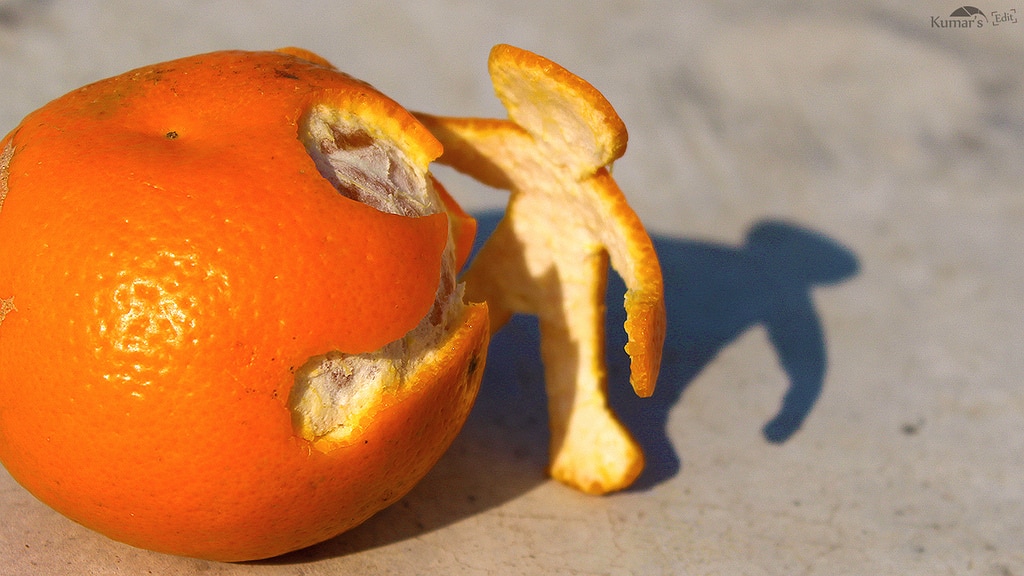 MINDFULNESS Mindfulness is awareness, with less judgement. It is used to connect us to our senses in a calm, observing way, so that we can 'tune in'. Once we are more tuned into our bodies we can understand them more and take calm, appropriate action. One example of this is meeting your ‘needs’ by first ‘feeling’ into the body and then using intelligent thought to ascertain what it might be. 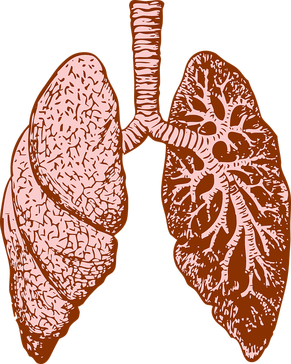 NEEDS Maslow gave us a useful method of deduction - the hierarchy of needs. Here I have taken his pyramid of needs, added to in the 1990s by various commentators. I’ve use the resources at Business Balls to inform my research. When we use this we can take a moment from our work and check in with each need, to see if that allows us to re energize and come back afresh. I have broke this down starting at the bottom of the pyramid. 1. Biological and Physiological needs - If you have 15 minutes, take a break from work and try this:
2. Safety needs - if you have a further 15 minutes try these:
3. Social Belongingness and Love needs - work group, family, affection, relationships, etc. Approach this if you have another 15 minutes free (like on a lunch break)
LONGER NEEDS
As we go down the list the breaks from work take longer. For fullness I have added them all in with suggestions for ways to check if the needs are met. Mindfulness and ‘full body listening’ will tell you if you need to do these things. 4. Esteem needs - self-esteem, achievement, mastery, independence, status, dominance, prestige, managerial responsibility, etc.
5. Cognitive needs - knowledge, meaning, etc.
6. Aesthetic needs - appreciation and search for beauty, balance, form, etc.
7. Self-Actualization needs - realising personal potential, self-fulfillment, seeking personal growth and peak experiences.
8. Transcendence needs - helping others to achieve self actualisation.
SUMMARY Clearly you won’t have time in your work day to go through all of these and you don’t need to. Awareness (reading this) and checking in with the body is the first step. I often notice that the physiological needs, once taken care of, free up enough energy to work again. This will also give you better health and les emotional reactivity. Try this - take a break at work and do some of the suggestions. Let me know how you get on. Ever wondered about inspiration and how to keep being inspired by life? This Blog is a simple philosophical discussion about enjoying inspiration in your life - a skill that can be learned and how it might start with awareness and acceptance of the end. COMPLEX CULTURE The culture we live in is complex and is comprised of millions of people, each with their own vivid imaginations and interpretations of life, partly informed by their experiences (nurture) and partly by their genetic makeup (nature). Each person is trying to be happy in their own way. A MODEL FOR WELLBEING? There are infinite ways in which one might feel a sense of well, but largely people equate this with happiness. At the root of this is a sense of connection with something in life that feels enriching and fulfilling. This is unique to each individual. HAPPINESS THEORY Happiness is a tricky word because everyone sees it differently. My friend Mark calls it ‘have-peace-ness’ to imply that happiness is more than just a fleeting emotion. Theories of happiness, like the PERMA model (Positivity, Engagement, Relationships, Meaning, Accomplishments), propose that by focusing on certain attributes of life, in a certain way, happiness will more likely occur - it states: “Find the things that make you happy and can make you fully engaged. You could even put goals to achieving more and challenging yourself in the activities you enjoy. Focus on your relationships with your family and friends by finding ways to connect and enjoy each other's company. Find the meaning to your life and what gives you a sense of purpose, it’s different for everyone.” - PERMA model website NEEDS This is not quite as simple as it sounds. Humans’ primary needs are always around survival. After that it depends on the unique and individual nuances of psychology to find a sense of belonging, self-esteem and self-actualisation, which is where a sense of meaning to life becomes important. “As each individual is unique the motivation for self-actualisation leads people in different directions. For some people self-actualization can be achieved through creating works of art or literature, for others through sport, in the classroom, or within a corporate setting.” (Kenrick et al., 2010) Maslow (1962) believed self-actualisation could be measured through the concept of peak experiences. This occurs when a person experiences the world totally for what it is, and there are feelings of euphoria, joy and wonder. IS IT WORTH IT? If one struggles to find ‘meaning’ it could lead to a focus on problems, pessimism, hopelessness and negativity. This mindset will then look for ‘earthly value’, instead of a deeper meaning - a sense of ‘what’s it worth?’ This is where the ego comes into play (the part of the mind that forms the image who you think you are - your identity). The ego sometimes thinks that being perceived as ‘important’ (by oneself or by others) is a good indicator of value, because of the positive emotions it gives in the short term. Yet in the long term this can lead to a life based only on achievement, future thinking or being externally validated, which can be very hard indeed. At some point one will be forced to ask deeper questions about the purpose and direction of one's life. “Life ... is a tale
WHAT’S IMPORTANT? Alan Watts notices how music is all about the ensemble and celebrating all parts. However, because the human mind loves drama and story it will seek it by looking for deeper complex story, meaning and to establish a hierarchy of what is ‘important’ and what is no. What is good and what is bad? This is reflected in our culture and people around you. These will be about self interest and largely based on fear, insecurity or worry that they won’t be ‘successful’ or that we are doing things in the ‘wrong’ way. LOVE VS FEAR The opposite of that is love - to have gratitude for what is, to appreciate each other and celebrate differences. To let each other experience and express themselves as they are. This doesn't mean we let people do things that are harmful to one another, no - that’s why we have laws and communities, to protect each other from actions borne from fear, which in turn fuels anger, grief and shame. COLLECTIVE FEAR The collective fear is the impression that our deep desires for beauty and love are liabilities -they are dangerous, selfish, indulgent and stupid. If we put them first then we will ignore the needs of others and the practical requirements for a life. We will be lazy slobs! These are legitimate concerns, yet we can also balance that in remembering that fear can be easily disguised as practicality. STAY IN LOVE Jim Carrey suggests that if we find the balance,by letting our inner selves shine, by finding what is inspiring inside, if we choose things more from our playful hearts, then we might find a nice surprise. if we stay in connection with what we love then we will naturally develop compassion and the desire to help others, because happiness is more vivid when shared and we can only be partially happy if we are not including the world around us in it. When we look out into the world and see others in pain we will be inspired to help. Organically created, this derives from an inner sense of inspiration, instead of external sense of egoistic value or importance. 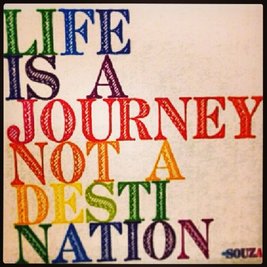 WHEN WE ARE STRESSED Depression, apathy, limiting self-beliefs, anger or anxiety can hinder inner connection, intuition and inspiration as much as thoughts of greed and expectation can. Yet at the same time these emotions are helpful - they are signposts that require you listen carefully. And when opened up and looked at skilfully the thoughts of need and expectation can also be teachers, gifts and helpful. The trick is to ask good questions of the body and the mind (which are of course all part of the same single being). The unskillful way is to become impotent by thinking his is important, that one needs to do something. HOW TO WIN AT LIFE So we’d like to relax this need, right? Because acting from a state of emotional overwhelm is always problematic, or egoic thought , which is all based on fear for survival, - it is incredibly draining for you and or others, it creates negativity and a world of ‘needs/should’,or fear, obligation, guilt - a FOG of confusion. Positive thought is fuelled on creative endeavours, with a letting go of need. When we act from this we gain energy, inspiration, appreciation and love. So my theory of winning or success is the realisation of asking the question, in each moment, What’s Inspiring Now (WIN)., or what do I need, how do I feel, how do you feel, what might they be needing… this is empathy and it can be directed inward or outward. Asking these questions repeatedly leads you to reprogram the mind to focus on being the change you want to see in the world, rather than running from the things you hate or fear. On some level it requires an inner confidence, a trust, which can only be created in feeling inside, for a length of time, whilst letting go of negative thought. Only then may one express honestly. MINDFULNESS One can wait for life to threaten our life in order to see this truth, through stress or pain or illness, or one can delve inside to discover it before that happens - to take preventive care, in the same way one brushed your teeth before you experience tooth decay. Meditation is this kind of practice - is is the art of listening, in non-reaction and non-judgement. It is designed to cultivate the art of intuition, which leads to more inspiration. When we are in contact with our bodies, with a calm mind, we can better realise, What’s Inspiring Now. We can also notice our emotions, like fear, with more curiosity and perspective. This leads to the ability to respond, rather than react. The ability to channel emotions positively and to adopt positive attitudes, even when one thinks ‘life is pointless’. This is a simple choice to feel into each moment of the dance, or the journey, to see that the journey is the destination - the moment is the point. When we keep returning to it we can more successfully stay in love, stay connected and stay inspired.k If you are interested in learning more and practising mindfulness please contact me and arrange a drop-in to one of my classes, or set up a one to one session. Executive summary, for those short on time: Spirtuality is: 1. A word, created by a thought 2. A transient, powerful and intangible beauty 3. Connection to the open intelligence of being . Since we compulsively over think we create a world of problems and suffering. By connecting to your being will put you in touch with inspiration, instead of external validation, but only when you are ready - when you really want it and are prepared to let go of the things you think you need. You can’t force it, so for now just enjoy where you're are and relax in the knowing that you can either indulge thinking or begin at once to re-balance your mental state towards being - either way you’ll be ok, in a spiritual sense. The full article. I ask myself regularly ‘who am I?’ ‘What am I doing? And then I realise I am seeking the answers to these questions with my thinking mind, which goes outward, searching for external validation, through my work, or my social networks, through art or through sensual delights. Inspiration is what I’m looking for and the clue is in the word: IN-SPIRATION. It’s about going inwards towards spirit. But what is Spirituality? Here is my long-winded definition, in the hope that it reminds us why it is useful to revisit, from time to time. SPIRITUALITY IS... 1. A WORD, CREATED BY A THOUGHT. First we must have awareness that this is simply a word - a human mental concept and creation. It is NOT reality, it is a map of reality, a representation using the English language. The term spirit comes from definitions like "animating or vital principle in man and animals". It is derived from the Old French espirit, which comes from the Latin word spiritus (soul, courage, vigor, breath) and is related to spirare (to breathe). But Reality is more than words, it is vibrating matter, felt through experience. Any concept like 'spirit' is only an idea. All ideas stem from an ideology -with inherent beliefs. Each person sees the idea with their own set of background beliefs and understandings, so the word is interpreted slightly differently each time. Thus reading this article will only give you a mental understanding of spirit. To really understand you must experience it. Nonetheless I will attempt more words to express how I see spirituality.  LA RIVER LA RIVER 2. A TRANSIENT, POWERFUL AND INTANGIBLE NATURAL BEAUTY An ever-moving beauty that, if captured, squeezed or forced to act differently, either destroys vanishes (although It is still there, but it is no longer tangible or visible by your mind or senses). If one wishes to experience the beauty one must let it flow and arise in its own time. I love the idea “You cannot capture a river, for it is always moving.” Once you contain and control it you change it - it is no longer a river, it is now, a lake of still water, with less life force. A wild phenomenon or animal has spirit, partly because it is in the wild, it is untamed. You can watch and appreciate the beauty, get even closer and you can be touched by this river, but get too fixated by its beauty and you will be overwhelmed. NATURAL BEAUTY The main beauty of that river is only experienced when it is in its natural setting, flowing and interconnected with the wildlife and landscape - if you try and stop it or change its course too harshly you will destroy its transient beauty (as shown in the LA river). You may also want to appreciate the wildlife within the river, watching the life of nature. An example of this art form is ‘fish tickling’; which requires an openness, a stillness, a letting go of 'grabby' need and a moving towards play and trust - one hopes a fish will come along and one knows that the most skillful thing to do is remain still and open and to enjoy the waiting, in the knowing that even if a fish doesn't tickle me today there is always tomorrow and the old adage “there are plenty more fish in the sea.” This is an attitude of gratitude and abundance, which will create patience and joy. Whereas If one is agitated and forces oneself to wait it is likely this will manifest tremors in the hand, and the fish will see this as a trap, they will feel the expectant mind and they will swim away. Same with the river - we can trust that it will change in flow, over time, but that it will continue to flow, finding the path of least resistance, and in that is beauty. POWER IN SPIRIT If one wants to harness the power of this life force then one must first study it closely, consciously (The word ‘con-science’ means 'with study' in its original Latin). It is essential to know the history of the river by studying its banks and changing flows. The river can be fished with these observations and with skills learned by spending time with the river. Its raw power can be be directed and influenced to help us in life, but not without care and understanding. Any natural phenomenon like this is in a complex interdependent relationship with life and so one must proceed slowly if one wants to respect these organic relationships. If we lose touch with the nature of this wild force, or if we forget about its inherent beauty then we will eventually destroy the life that makes it beautiful and valuable or it will destroy us with its suppressed natural power. Either way we suffer if we force the spirit to comply to our will. 3. CONNECTION TO THE OPEN INTELLIGENCE OF BEING. With practice we develop mastery. If you practice appreciation of transient and intangible beauty through feeling and enjoying (rather than controlling, or just talking about it and thinking) then you master the art of inspiration - the ability to more easily connect with the spirit inside yourself. Spirituality is often thought of as connection to something greater than ourselves, but what if that 'greater thing' was insider you? To see a World in a Grain of Sand This poem hints at where we can connect to truth, power, beauty and understanding - in the felt experience of the moment, inside. This is where intelligent life flows from - somewhere at the centre of your being. Not a place but a connected movement. The intelligence that constantly emerges from the synergy - the collection of multiple interconnected parts that work in harmony, with no master. It is more than the sum of its parts.
This kind of intelligence is less about mental knowledge and more about wisdom (experiential knowing). Any attempt to represent or record it will be inferior to the direct experience of it. It can only be known in brief moments. In those moments a skillful way of being emerges; a power to trust, to have compassion, presence, vitality and love. This cannot be documented or proven, only experienced. Isolating variables to create models of happiness always fall short because they lose touch with the artful nature of spirit. But with practice we can dip in and out of this knowing with growing ease. Much like a skilled naturalist we are more able to connect with spirit when we understand it - and it will then be more available to us, because of awareness, practice, appreciation and trust. HOW DOES THIS RELATE TO THINKING When we encounter difficulty we are conditioned to turn to the rational mind to make a decision. Where spirituality is concerned the 21st century mind will often choose from one or the other (a binary); to move towards more either thought (analysis, ideas, judgements and quantifiable evidence) or towards spirit (which has no evidence, because it is transient. It doesn't take any credit for creation). BALANCE Developing balance is something that requires experiencing each side of something. It is only through the contrast that we find the right balance for oneself. Which is why each individual explores thought - goes round in circles of analysis, philosophy, moralising and trying to be right. Eventually one will come to the conclusion that thought is useful for creating external things (like cars or houses) but that it cannot connect is to the reasons to live, it cannot provide the deep inspiration to live a beautiful life, with wisdom. Similarly, relying only on a deep inner connection to spirit, without practical knowledge will be unbalanced with the nature of social and physical reality and lead to physical problems. BEING GOOD VS BEING YOURSELF Once one finds a balance that feels good one does not need to ‘try’ and be good or compassionate one can just let it flow naturally from connection to spirit. Written down that may appear incredibly naive and perhaps dangerous. Again, one can only experience it. THE COLLECTIVE BALANCING Modern life has been dominated by thinking, recently. That dominance (unbalance) has fixated us on the creation of external stimuli with the belief that ‘technology and mental intelligence will be our salvation’ and continue the 'race'. This belief fuels all the systems of living we now experience. We use rigid rules and words based on quantifiable things. We consume or create things to feel good. We do things, rather than simply be in our selves. Thinking is generally being over used and compulsive. Eventually this creates distrust, problems, fear and more rigid beliefs. The mind becomes sick with compulsive negative thinking and we drive ourselves gradually towards self destruction. Or towards a re-balancing... OPTIMISTIC OR OPTIMISING Perhaps though our nature will in out and we will reach a threshold where we naturally choose to rebalance the spirit/thinking equation (one way or another). This is an individual journey that then feeds into a collective (general) state. Because life is all about balance - homoeostasis. Is this optimistic or just a recognition of the optimising nature of life? What goes up must come down. We are finding the balance in this dance and so when we are ready we come back into being and connect with spirit once again. This will happen for as long as feels right and then we will get lost into thinking once again, then spirit, then thinking... in, out, in, out... until, death. THE CONCLUSION Death will happen and it will either return the spirit to the ether, ready to be reformed again into transient beauty (f that's what one chooses to believe) or it will just the end of life, in which case, no worries. The eternal sleep will be nothing to experience so cannot be good or bad. In the meantime, during your life experience and balancing, if spirit is something you are curious about then come and play with a spiritual practice like mindfulness - drop me an email. If you are enjoying your thinking mind then great - learn and create some awesome words, art or things in the world. Either way it's all good and life will find the balance for you, so you can simply enjoy it. |
AuthorsNeil Morbey is a meditation teacher, group facilitator and inspiration guide for Positively-Mindful.com Blog Index
Archives
April 2024
|
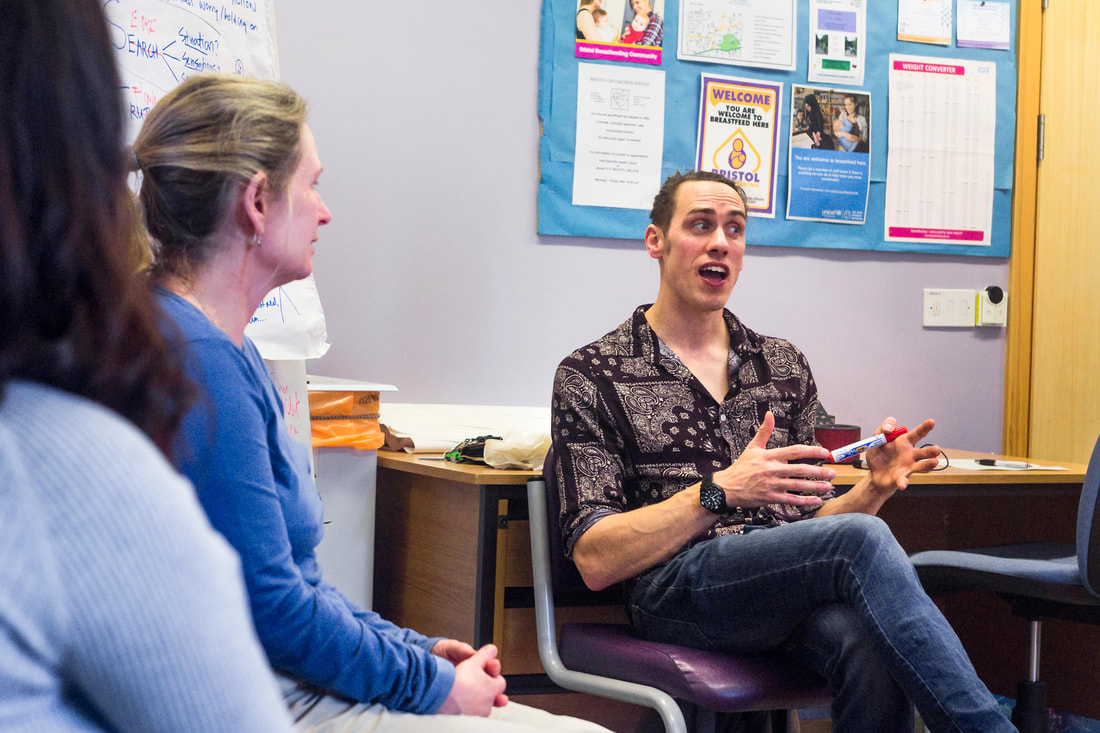
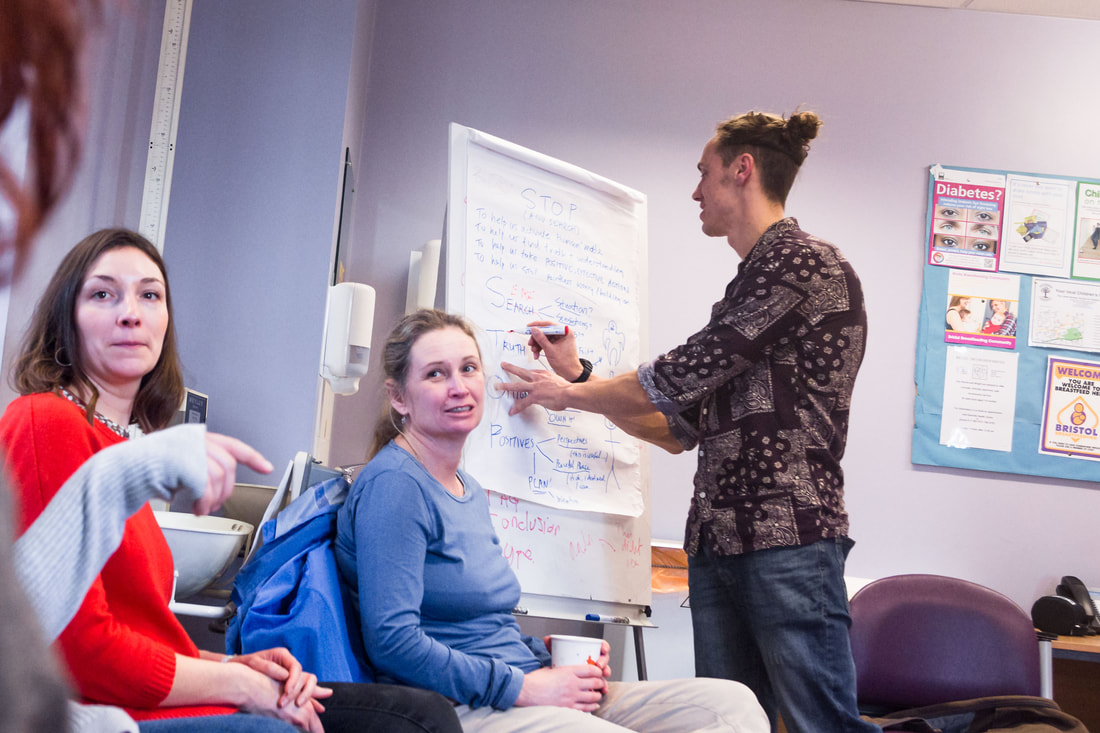
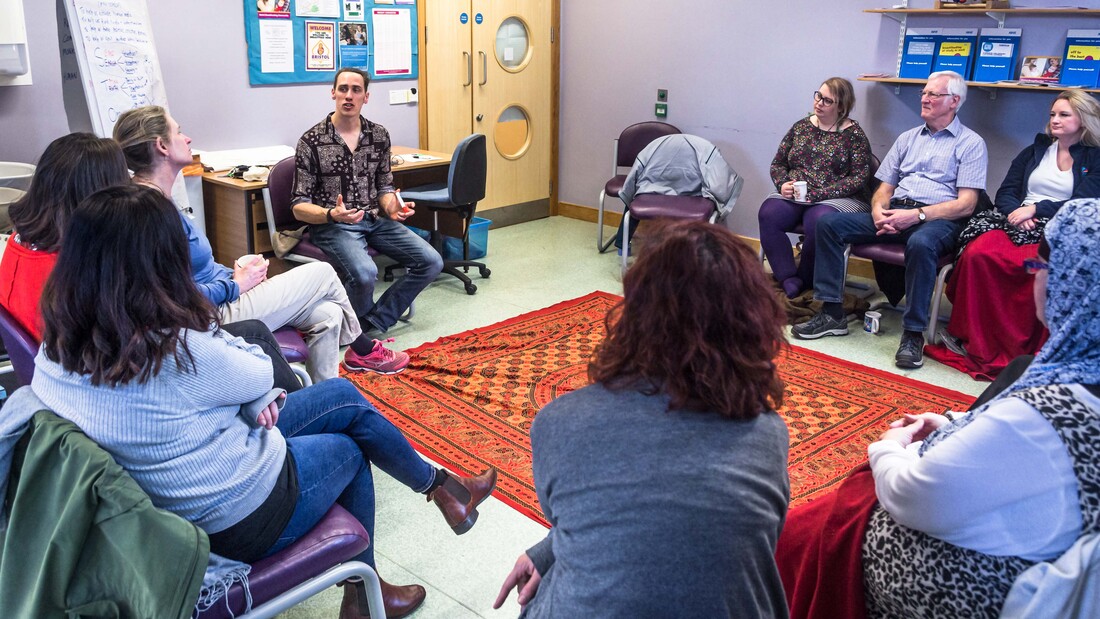
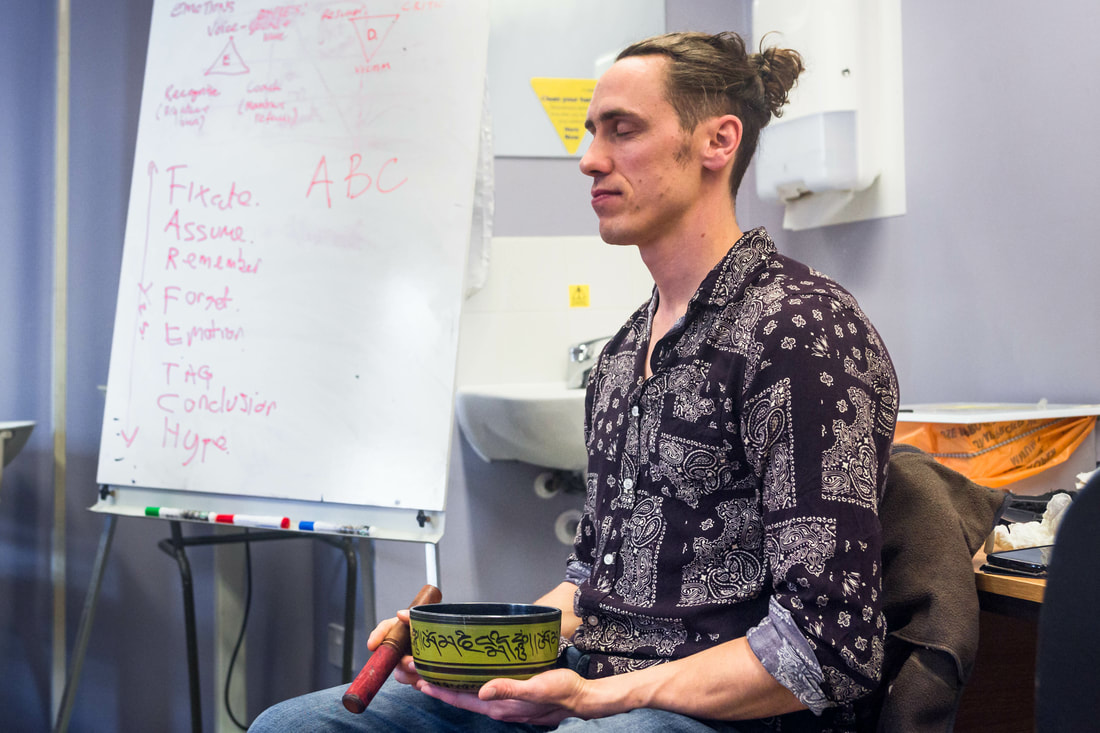
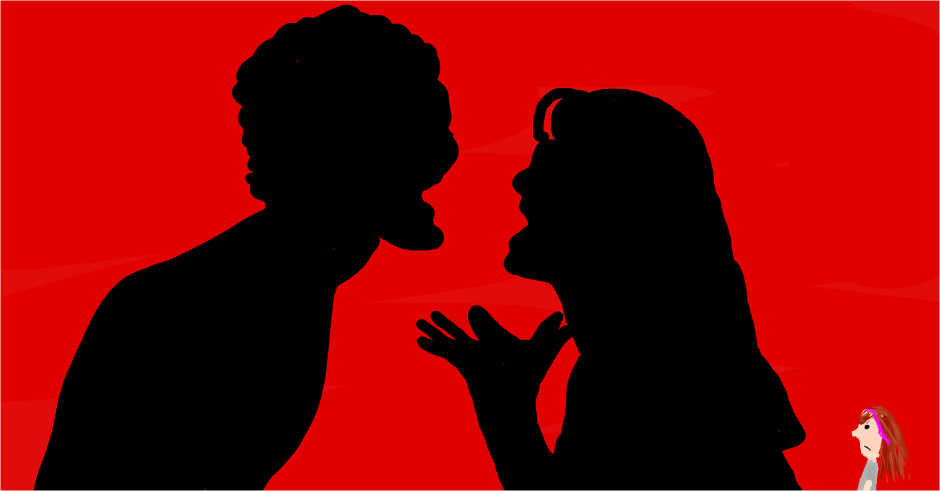
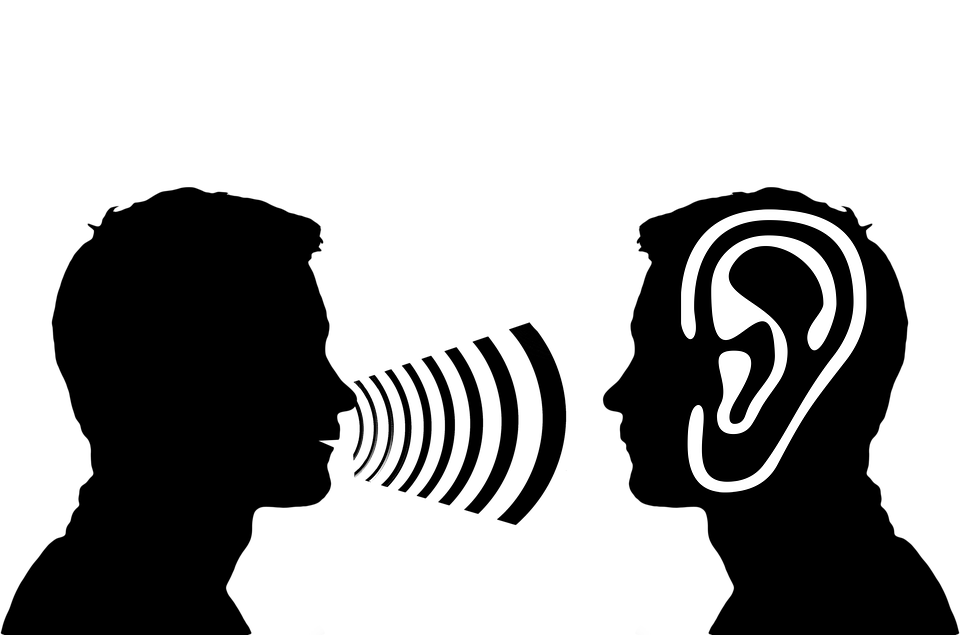


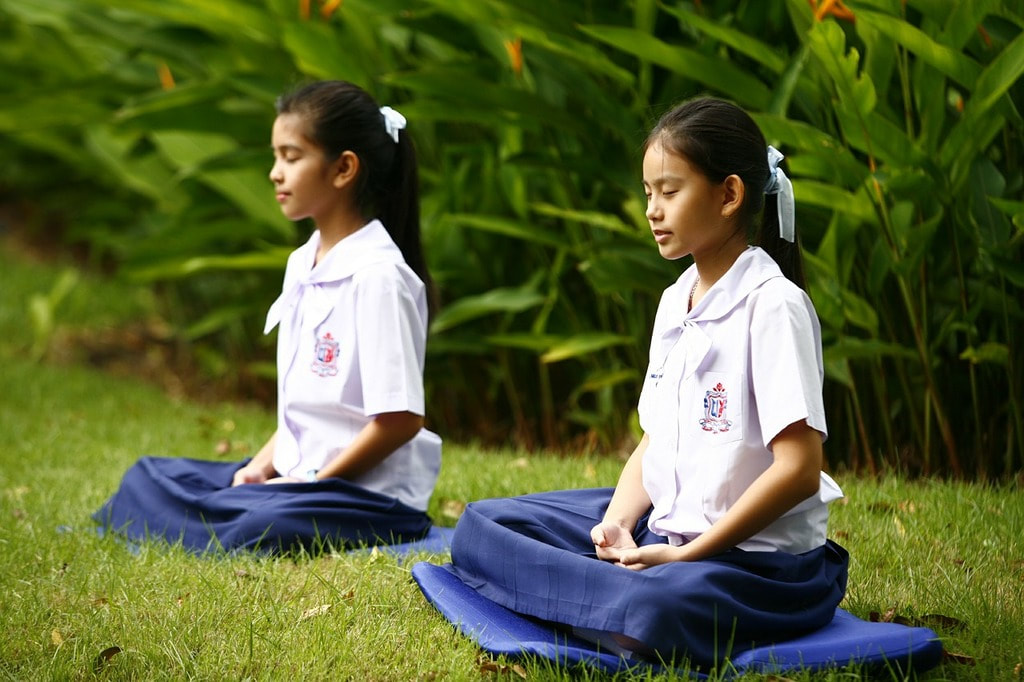
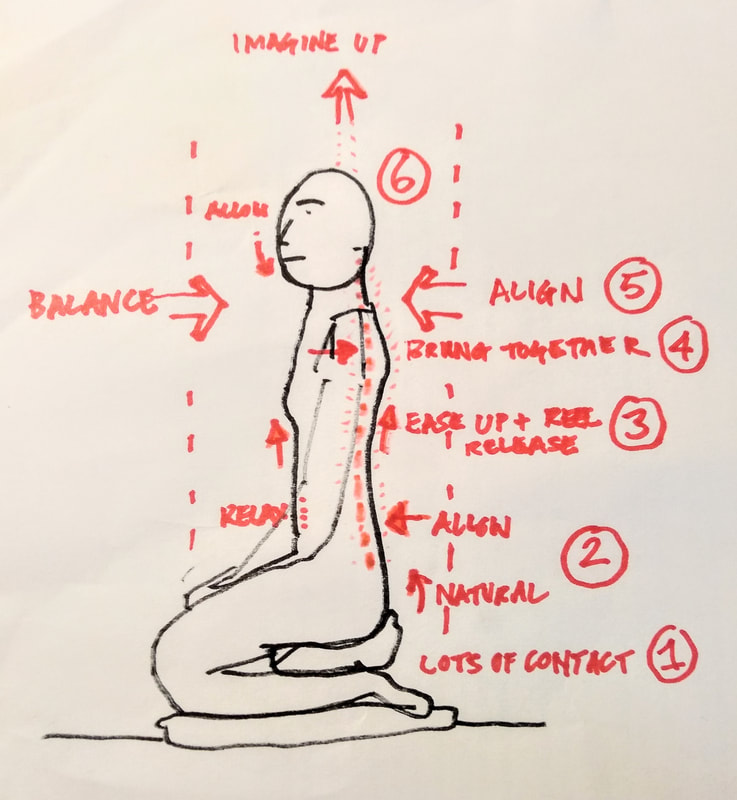
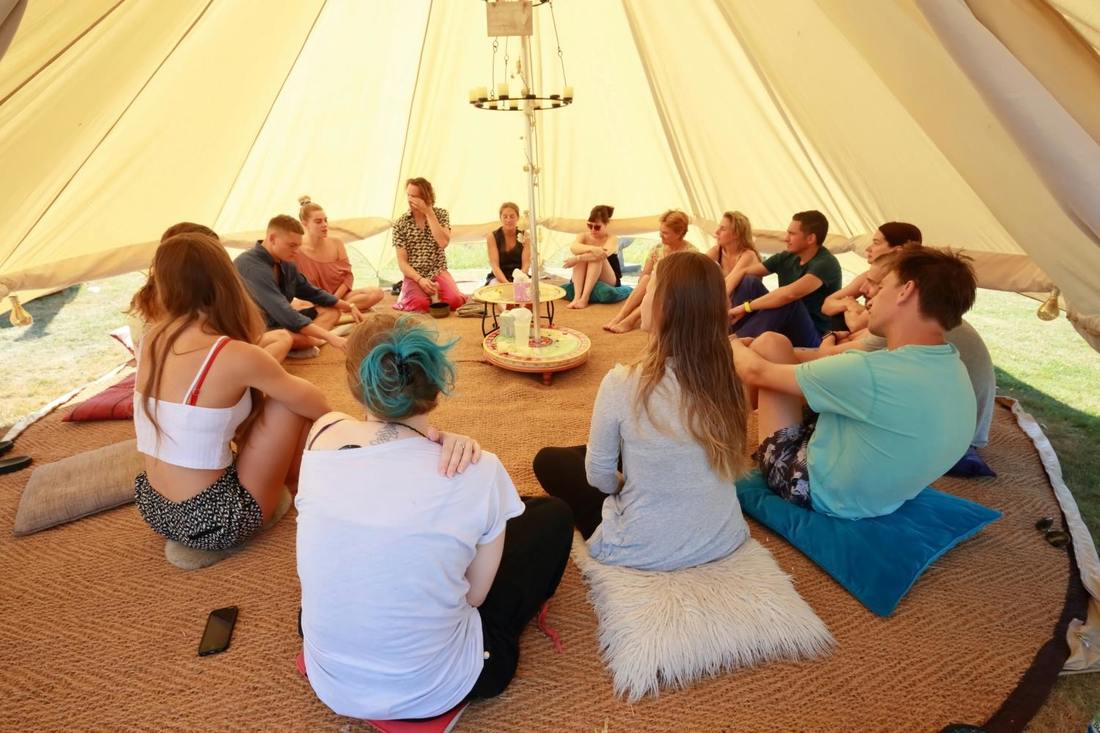
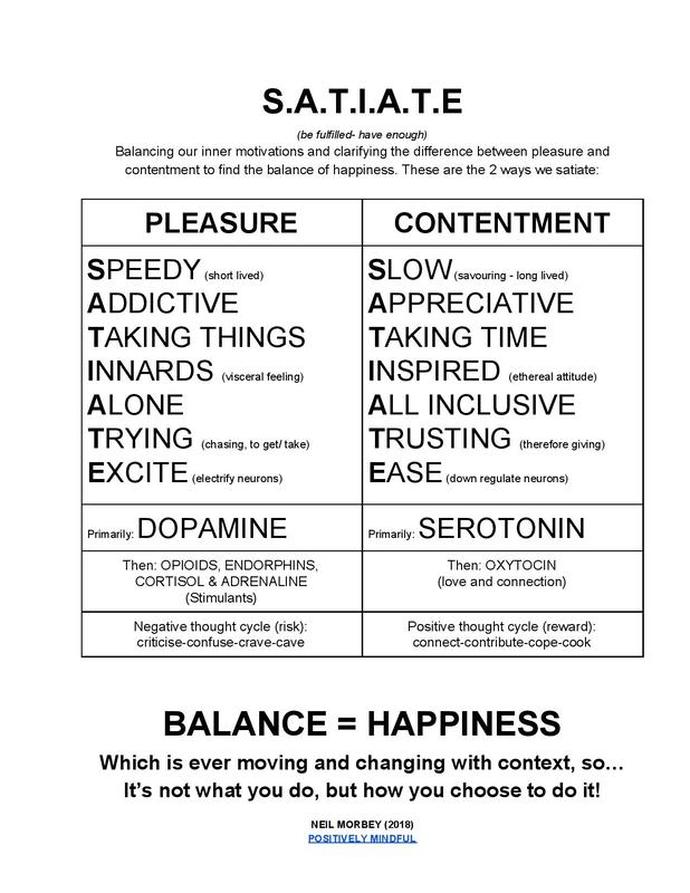

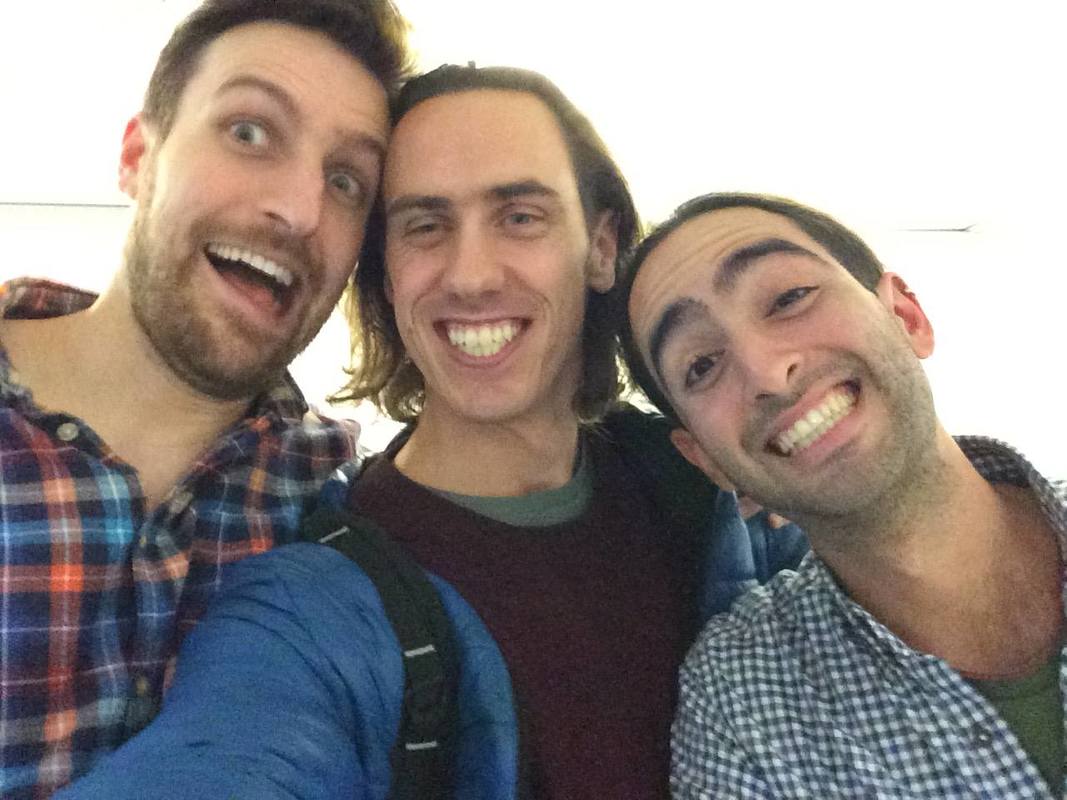
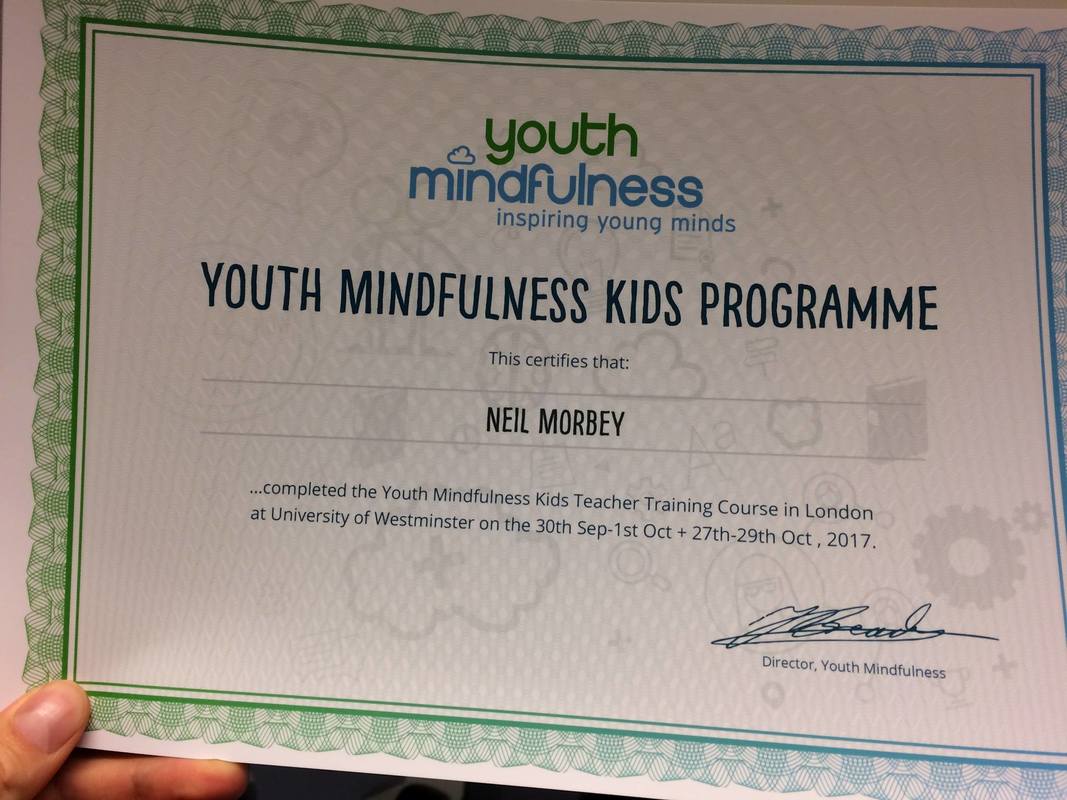
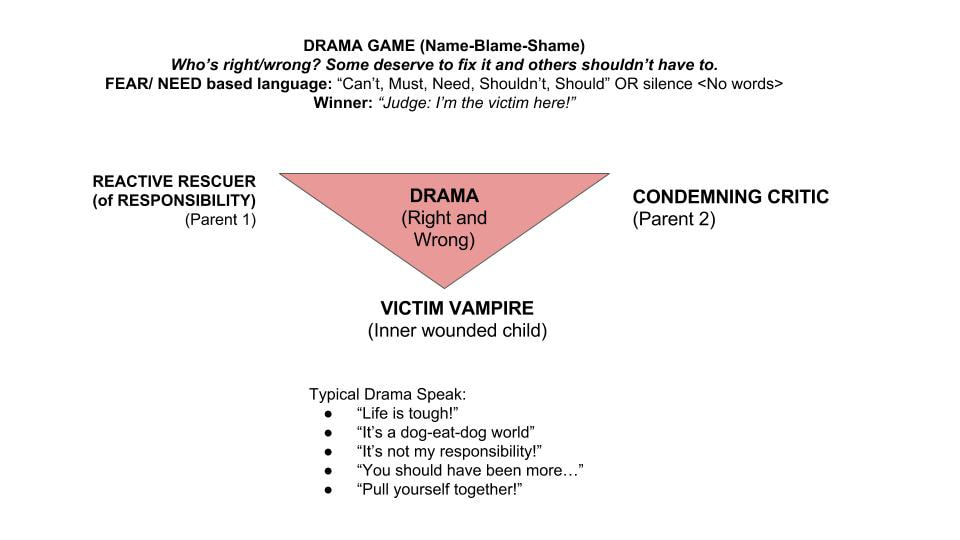
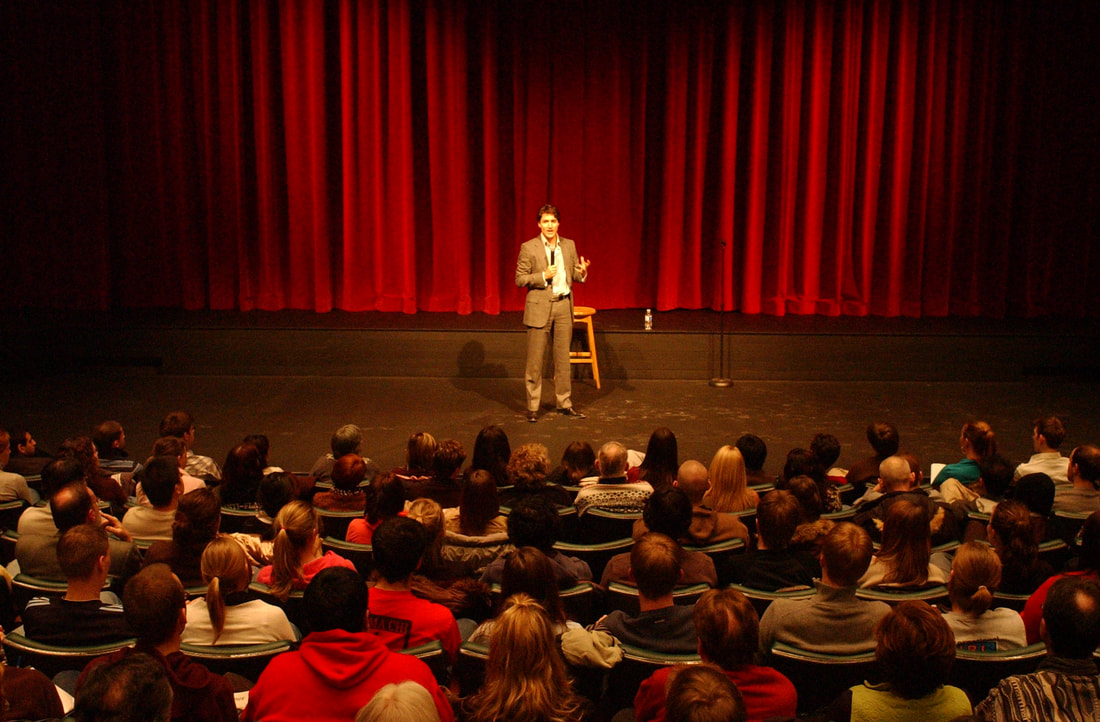
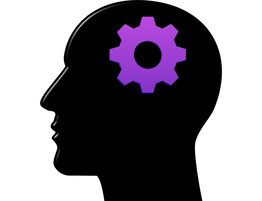


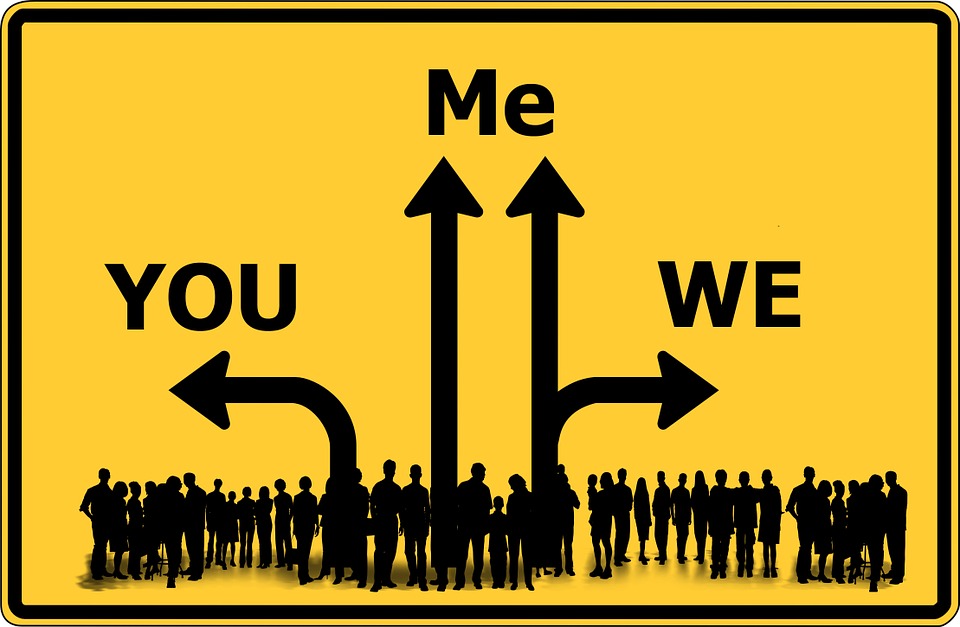

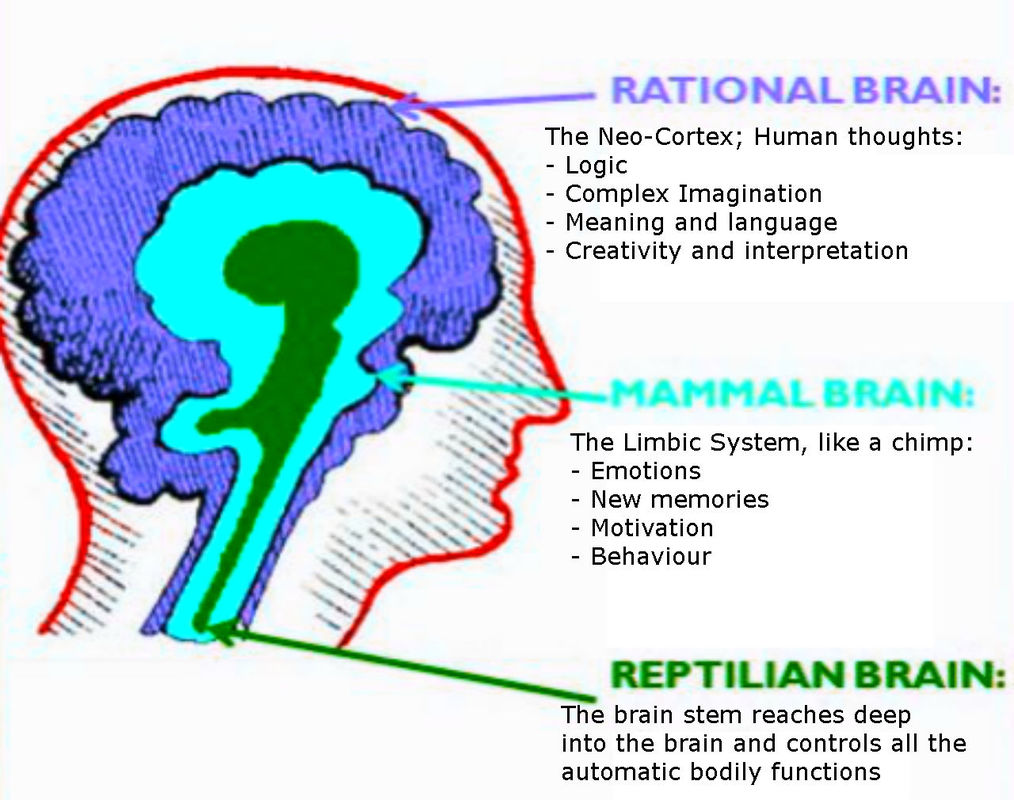
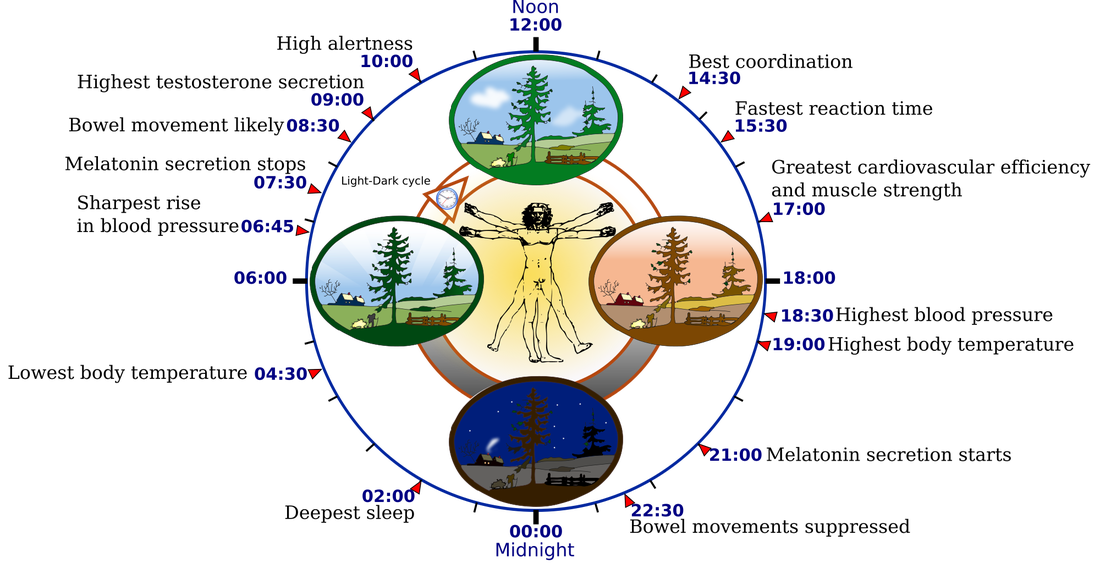

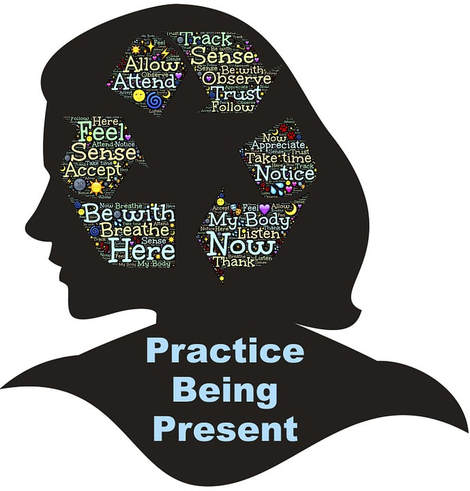

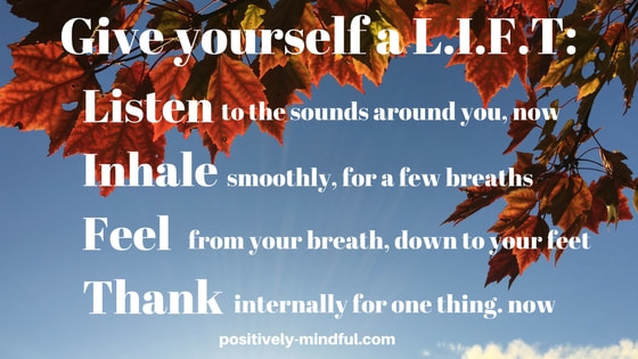
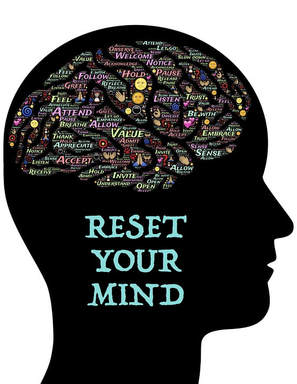
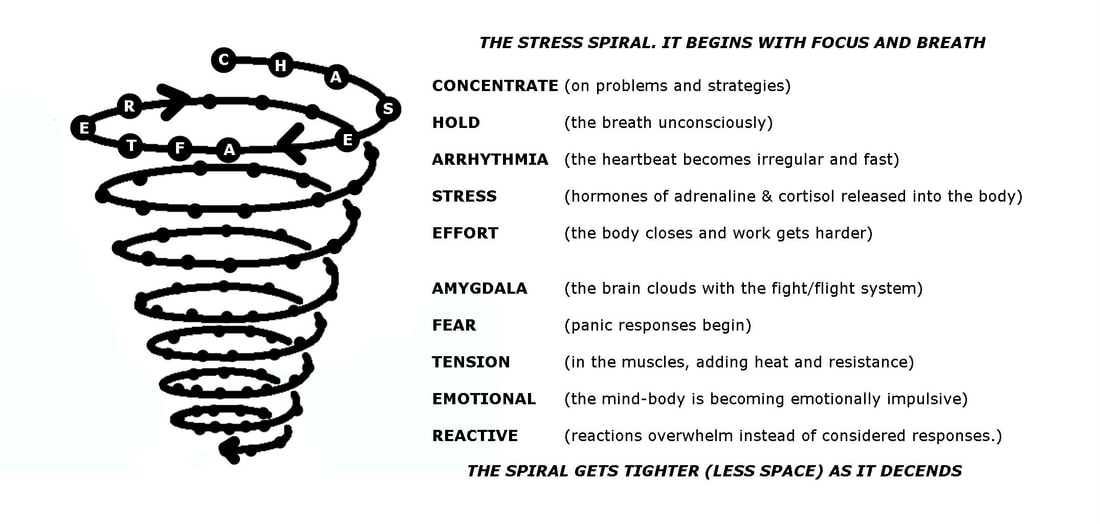
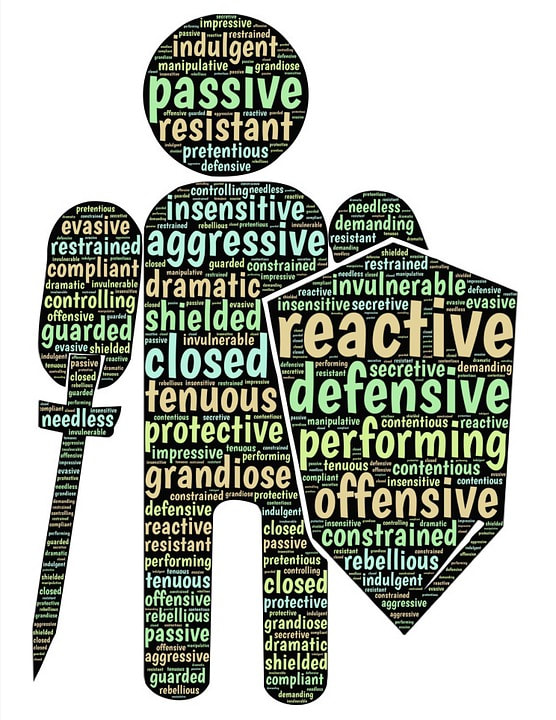
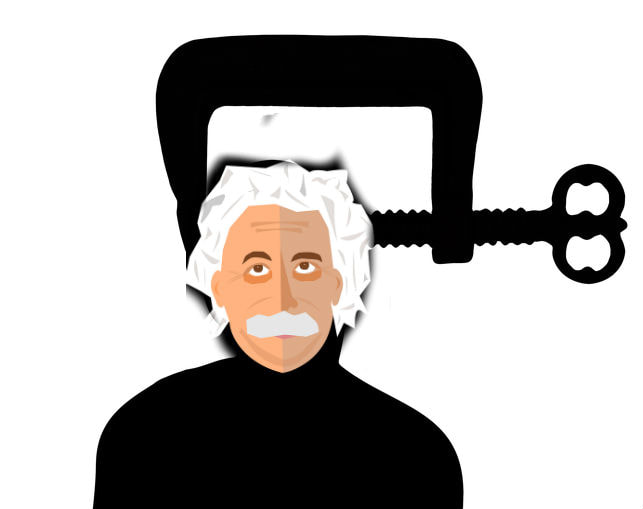
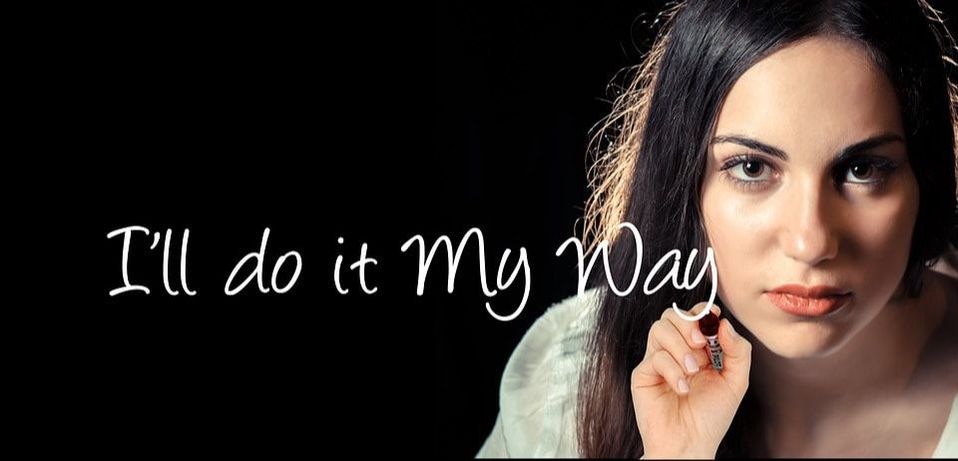
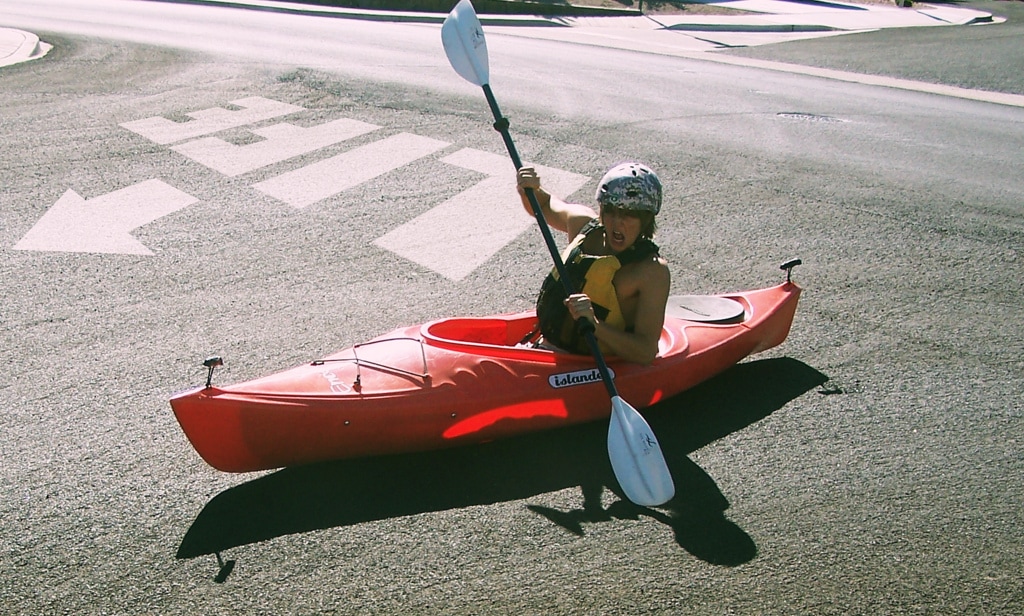
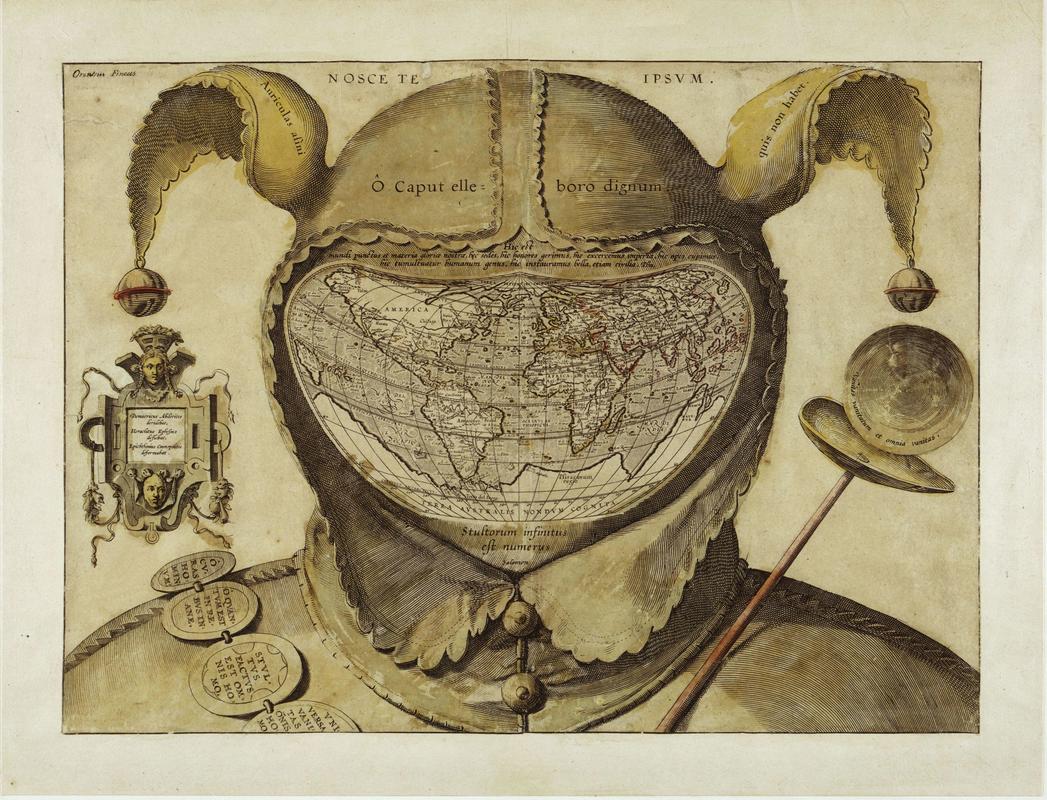

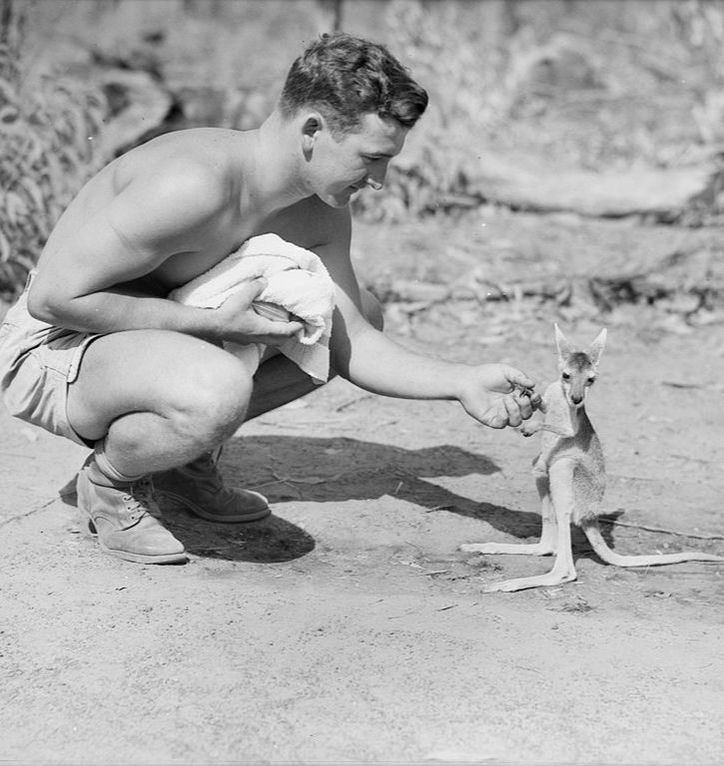




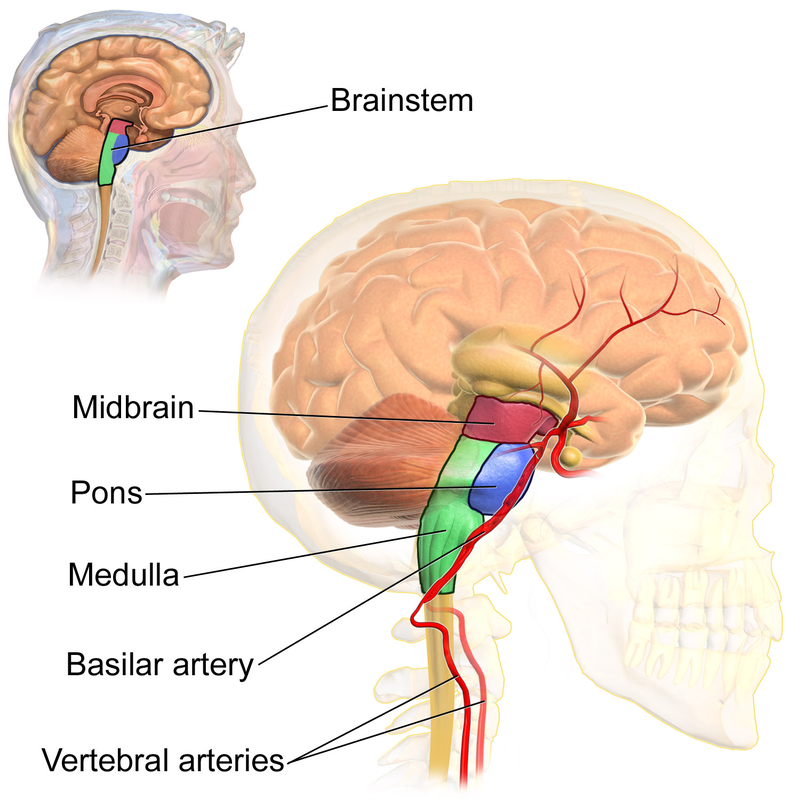
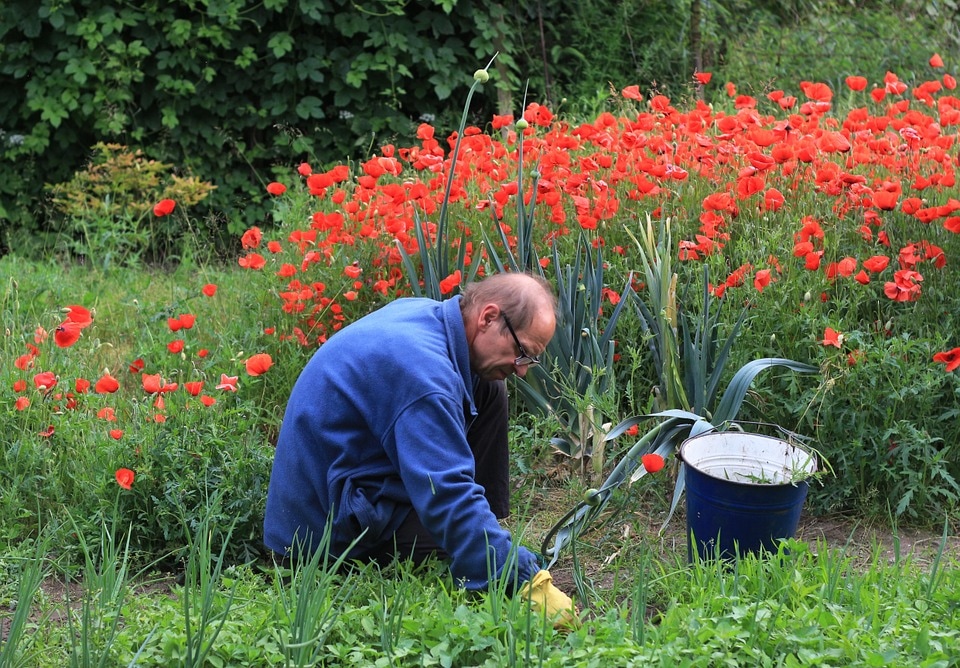
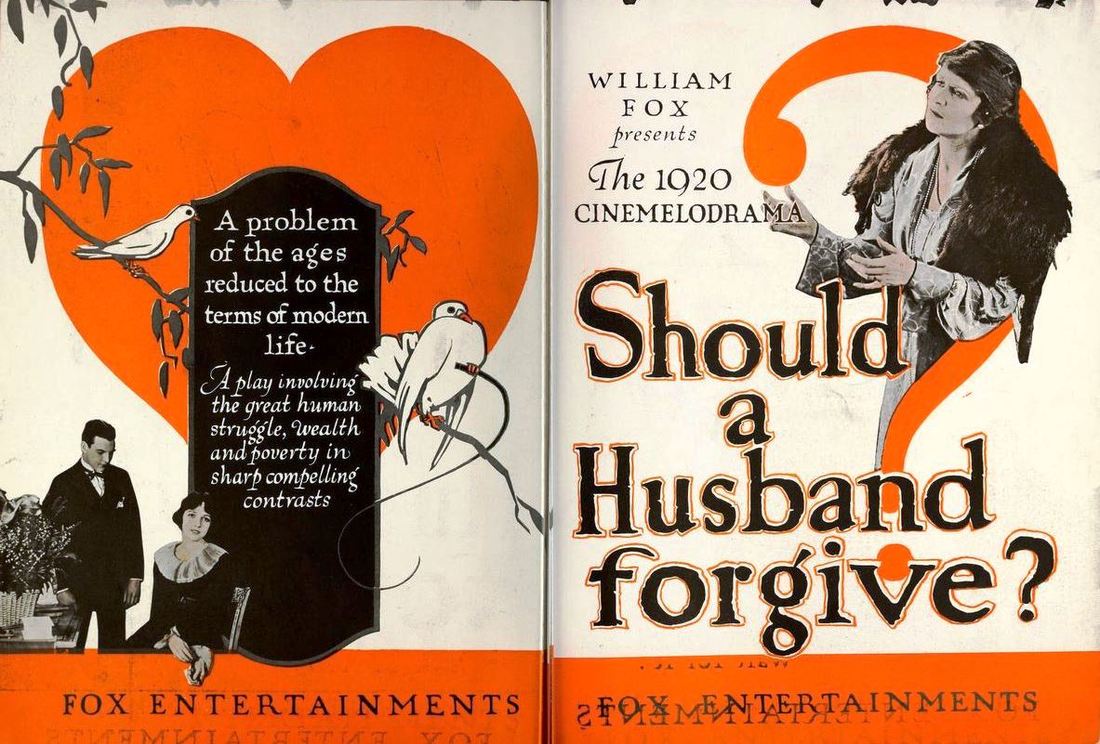
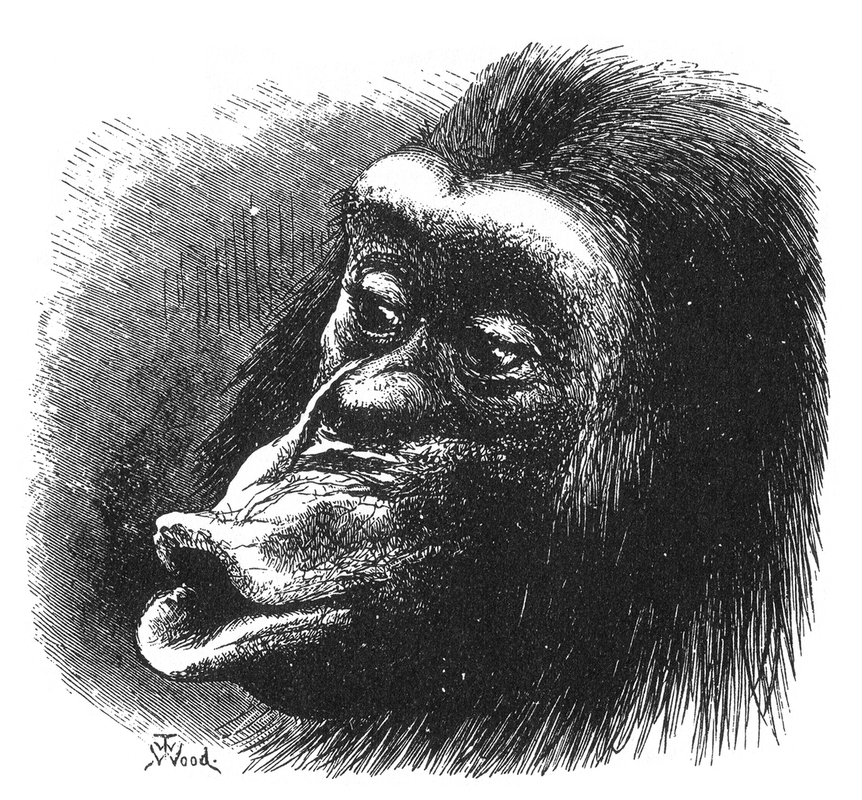
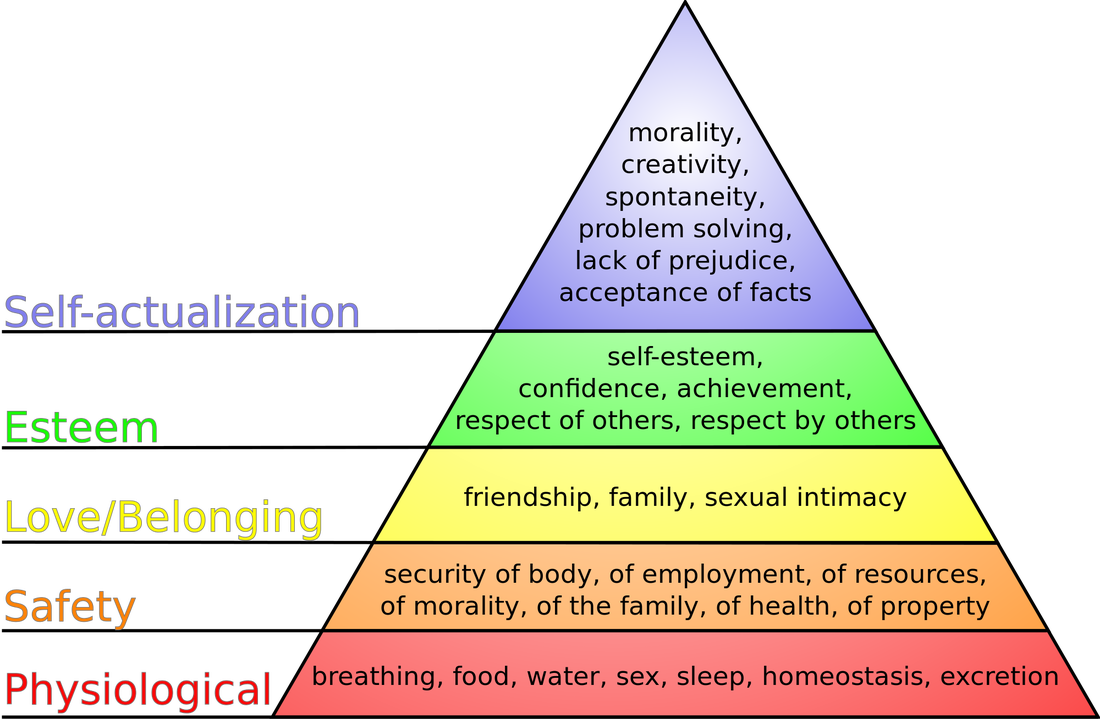



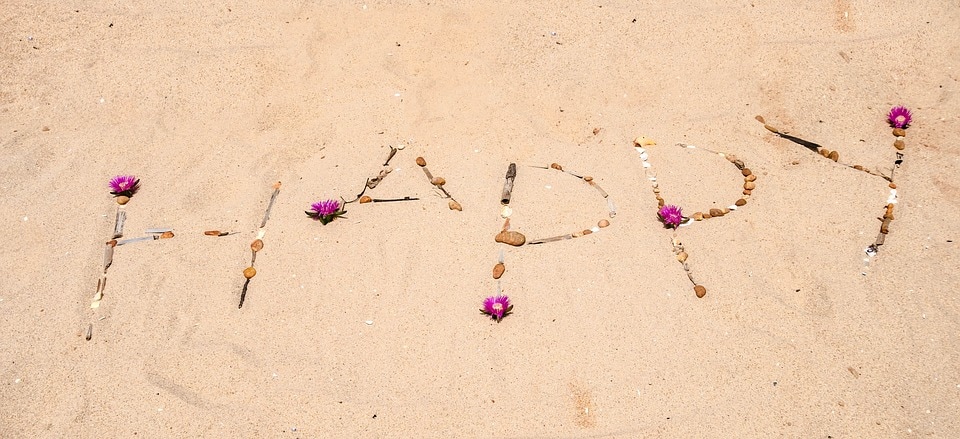

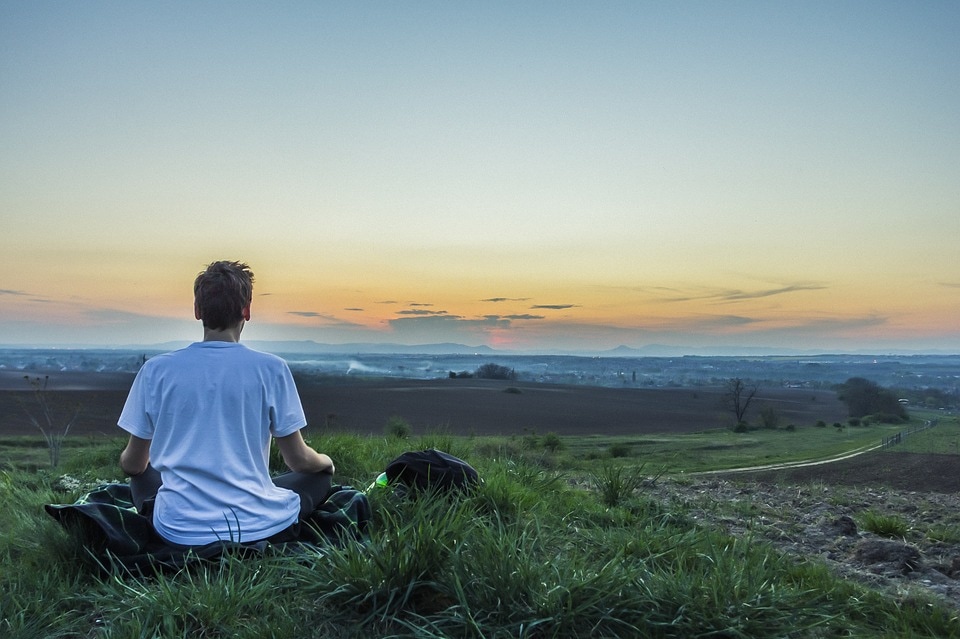

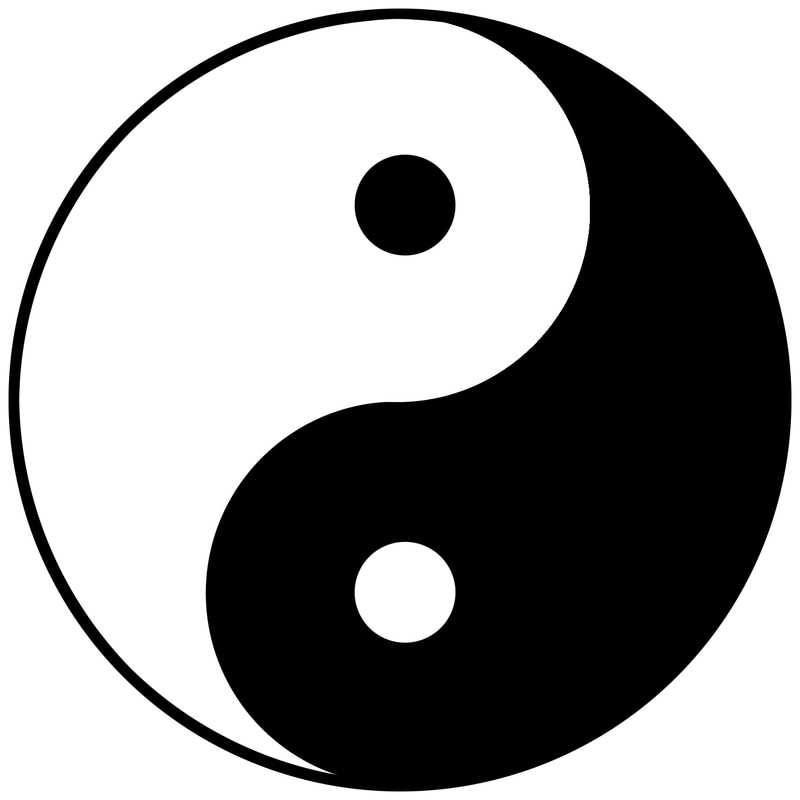
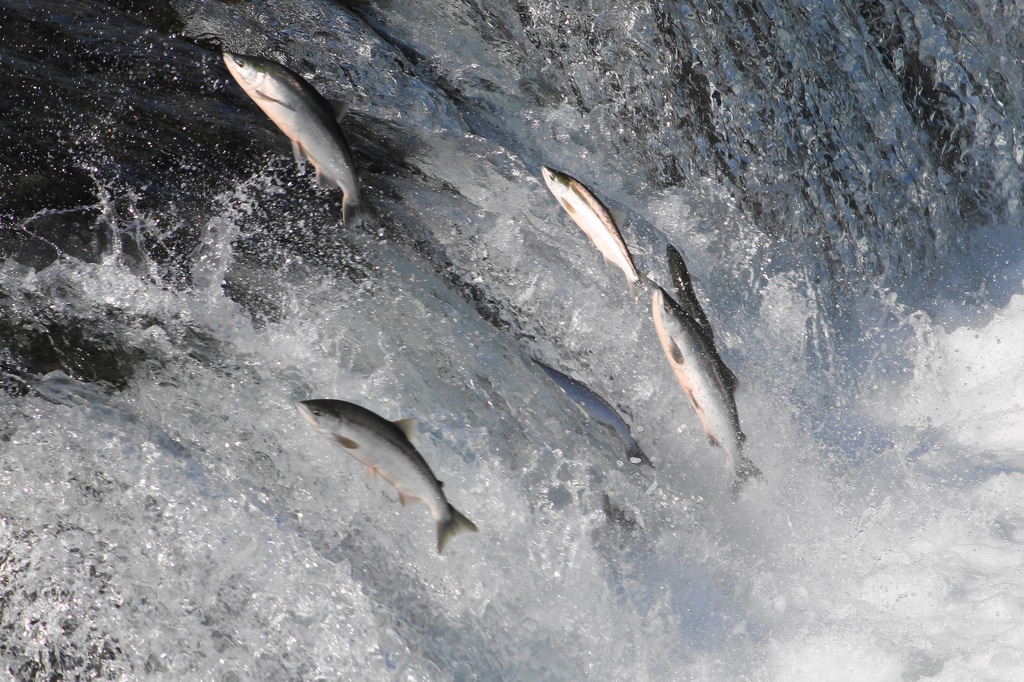
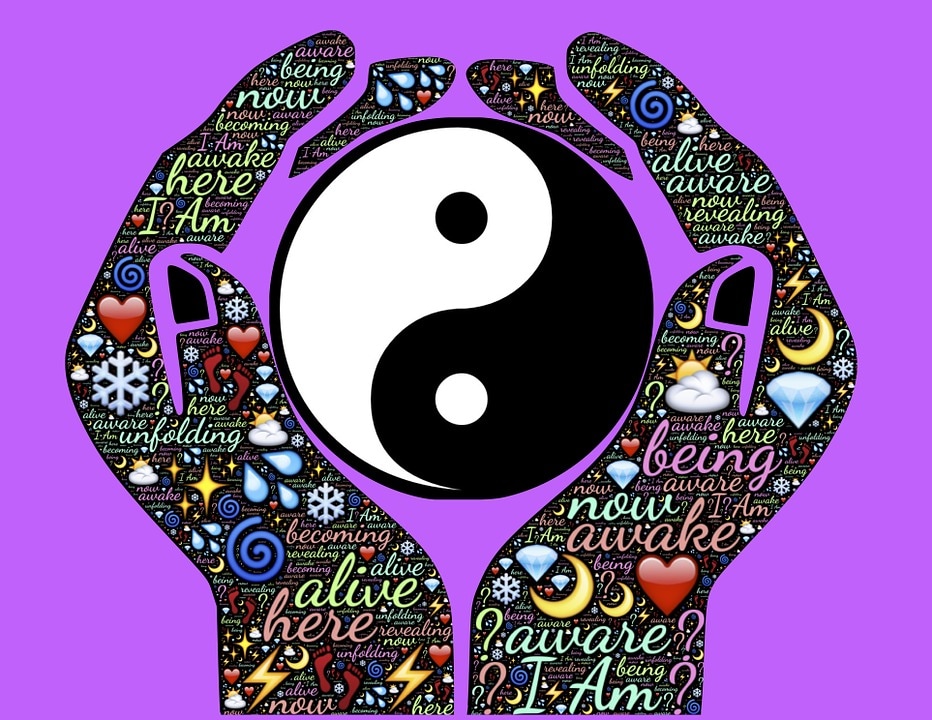
 RSS Feed
RSS Feed